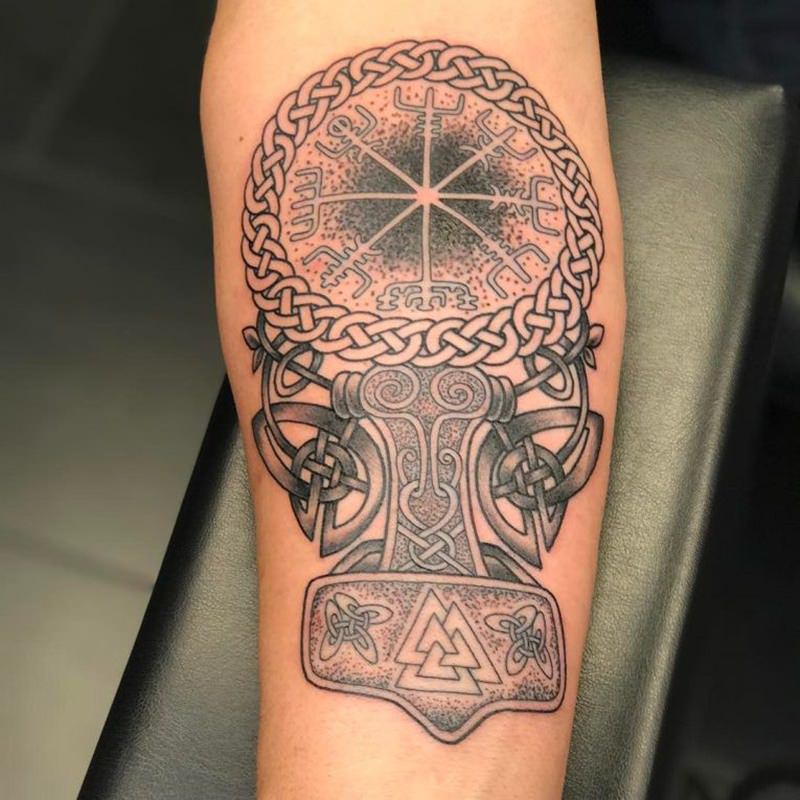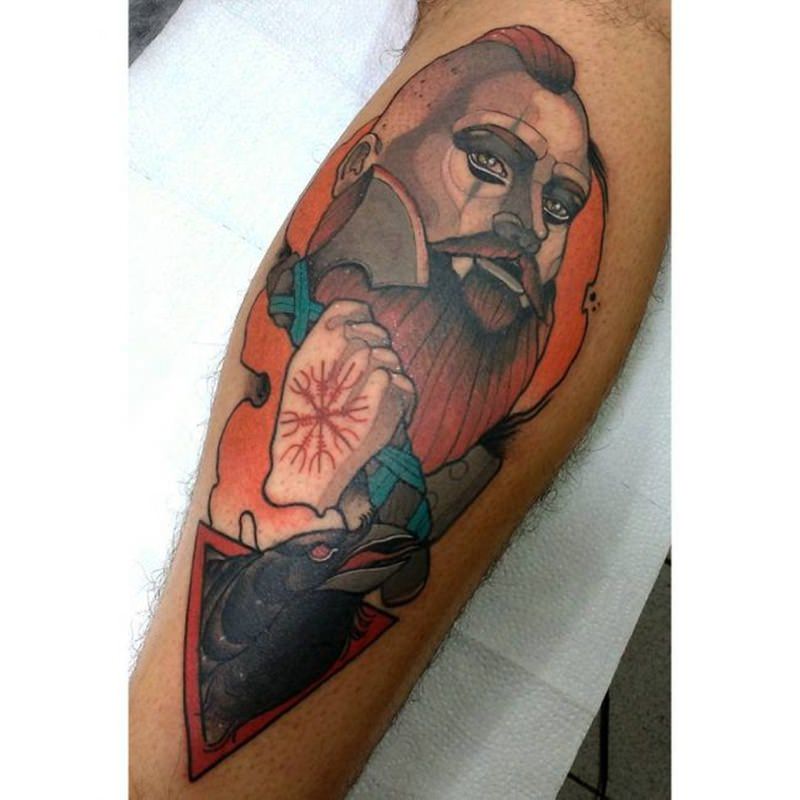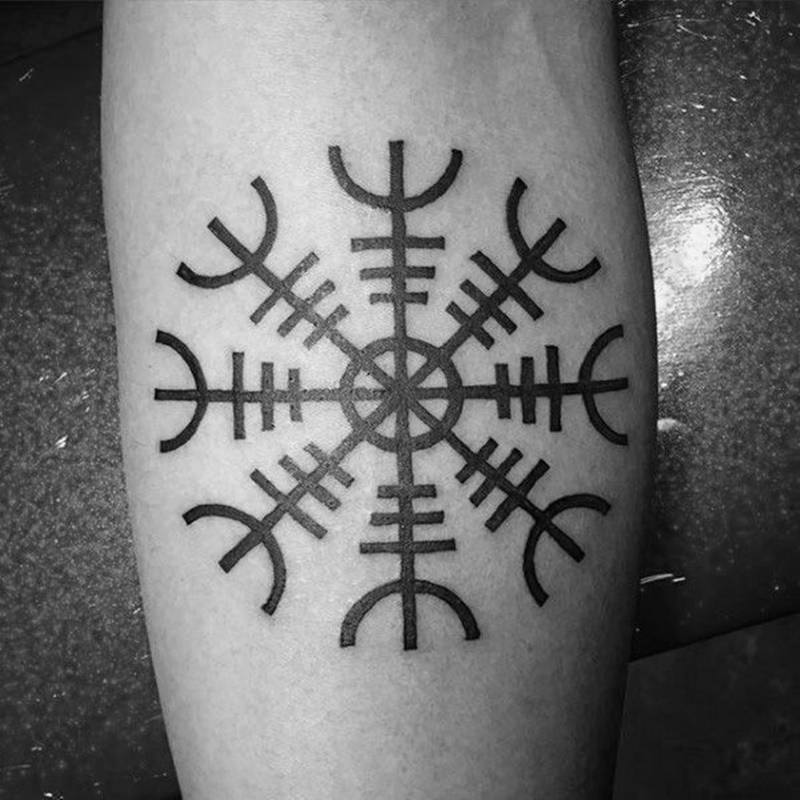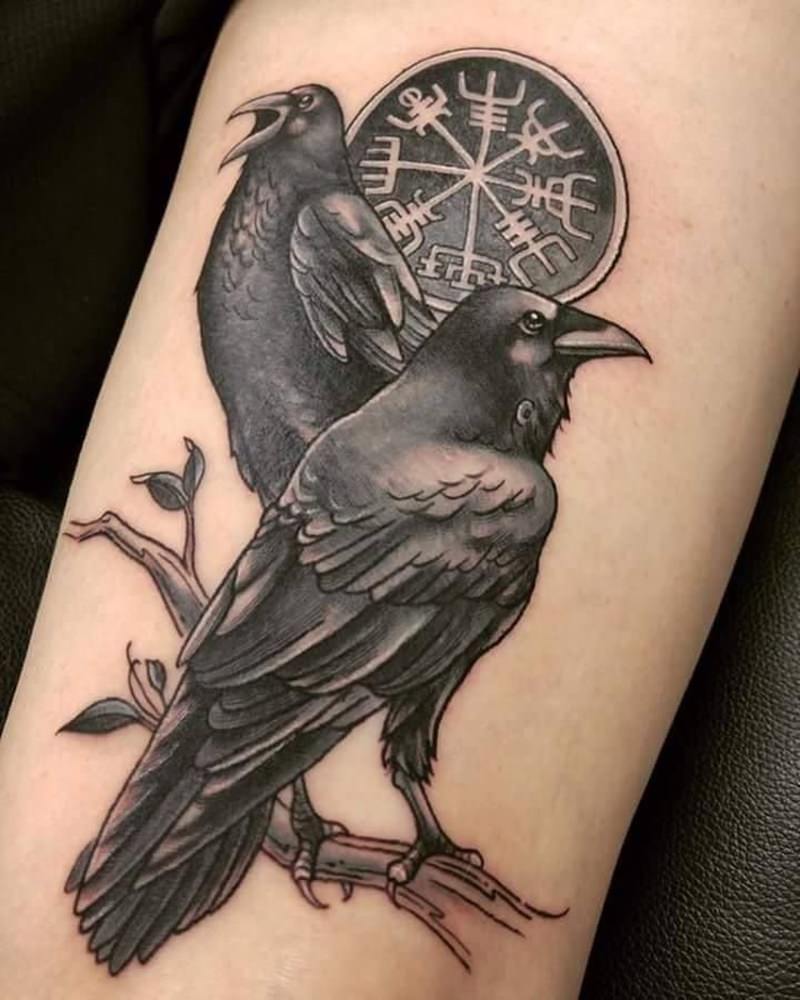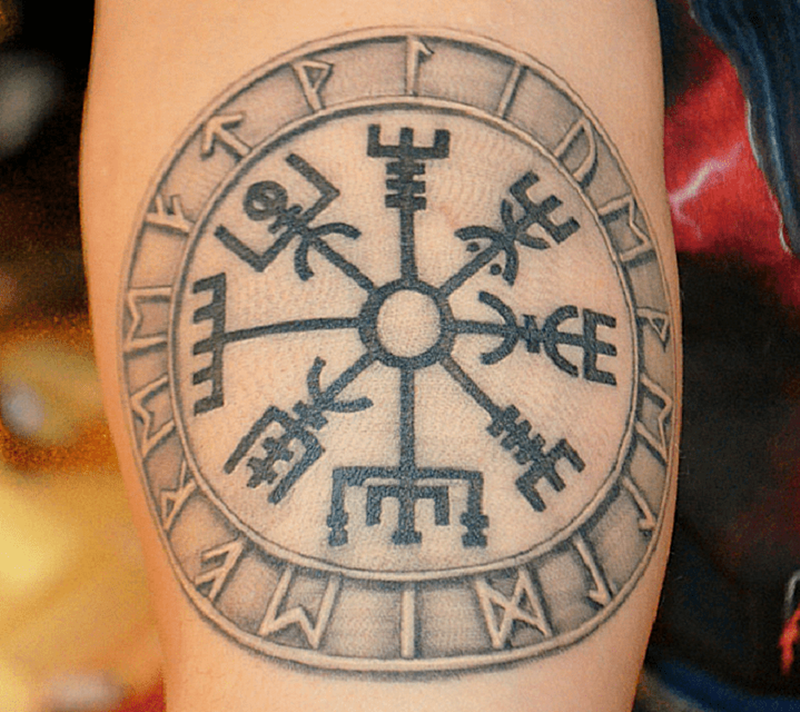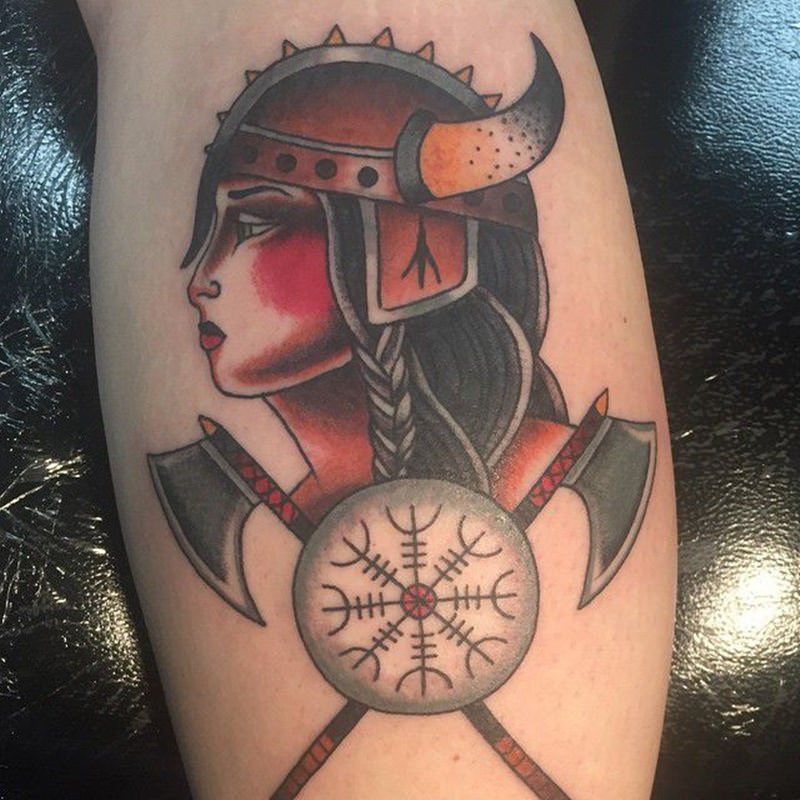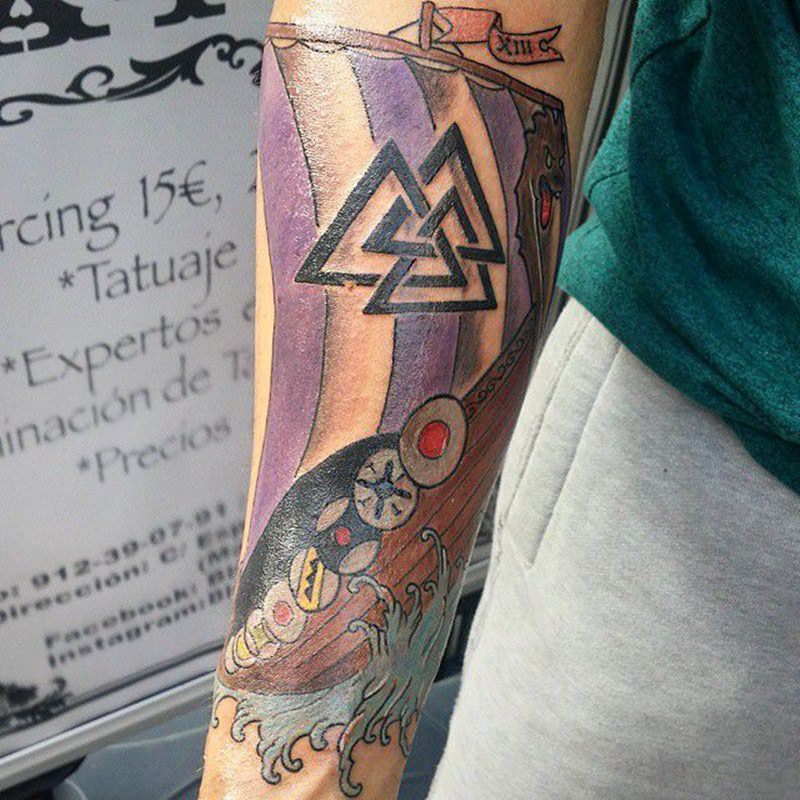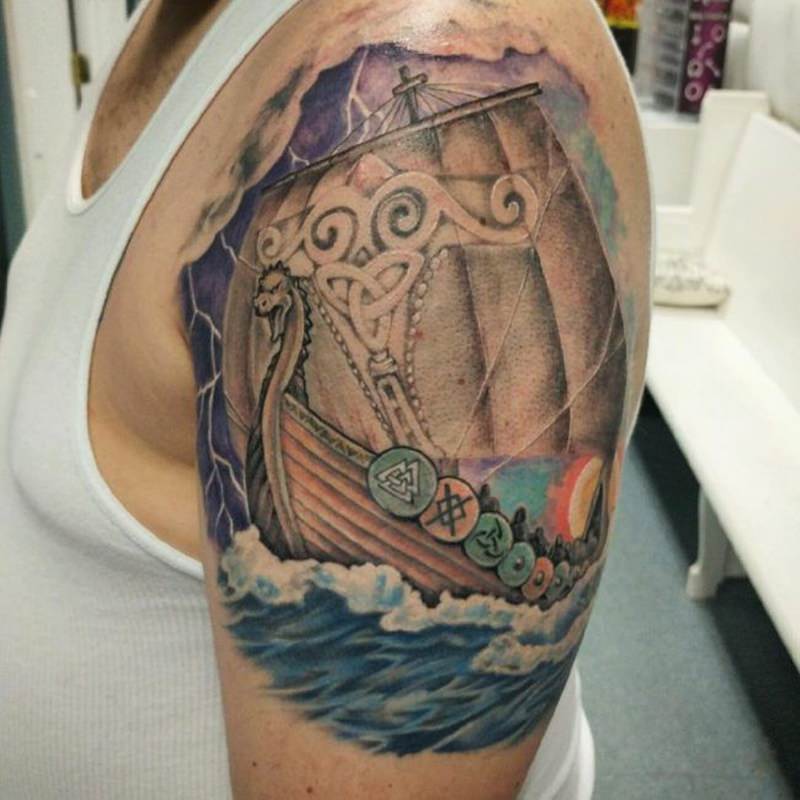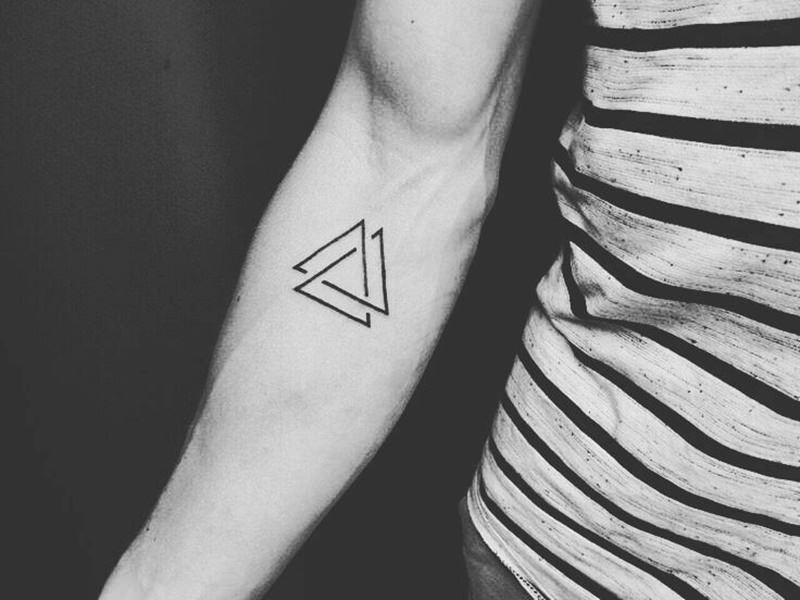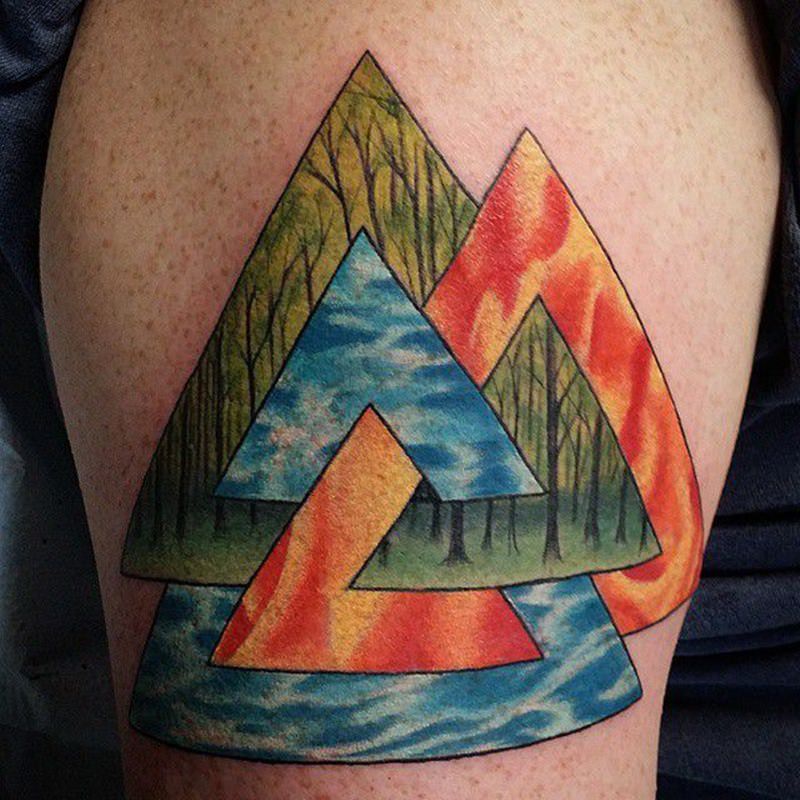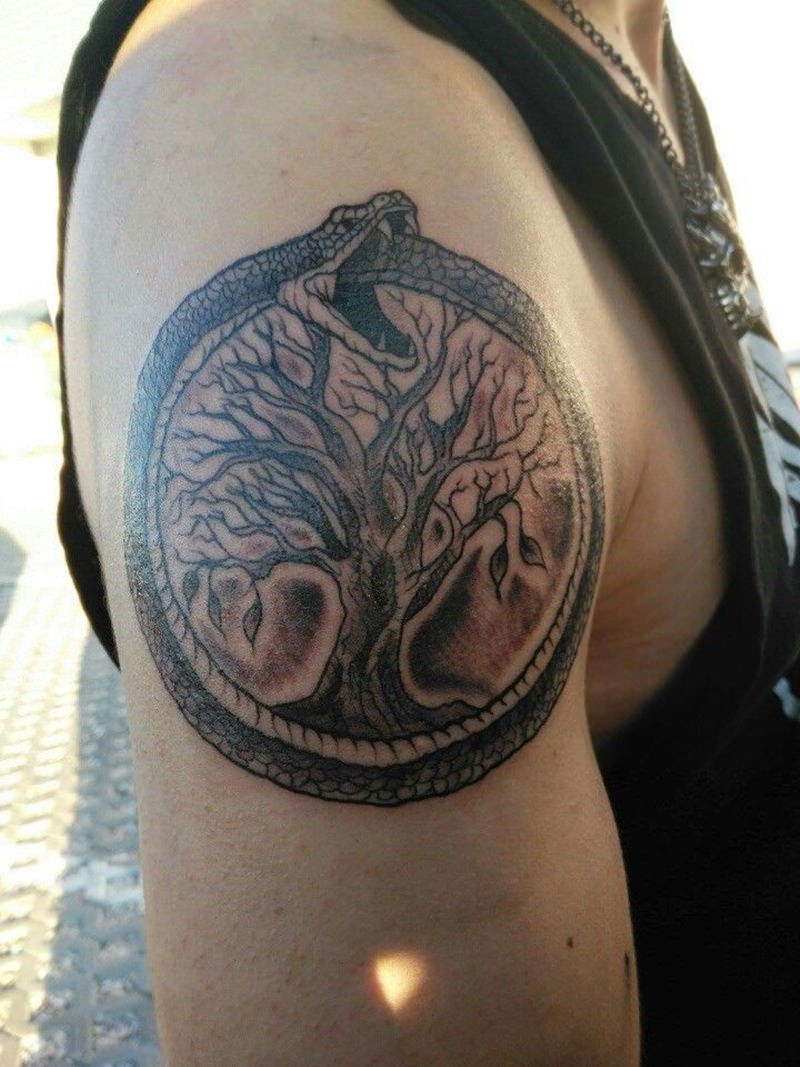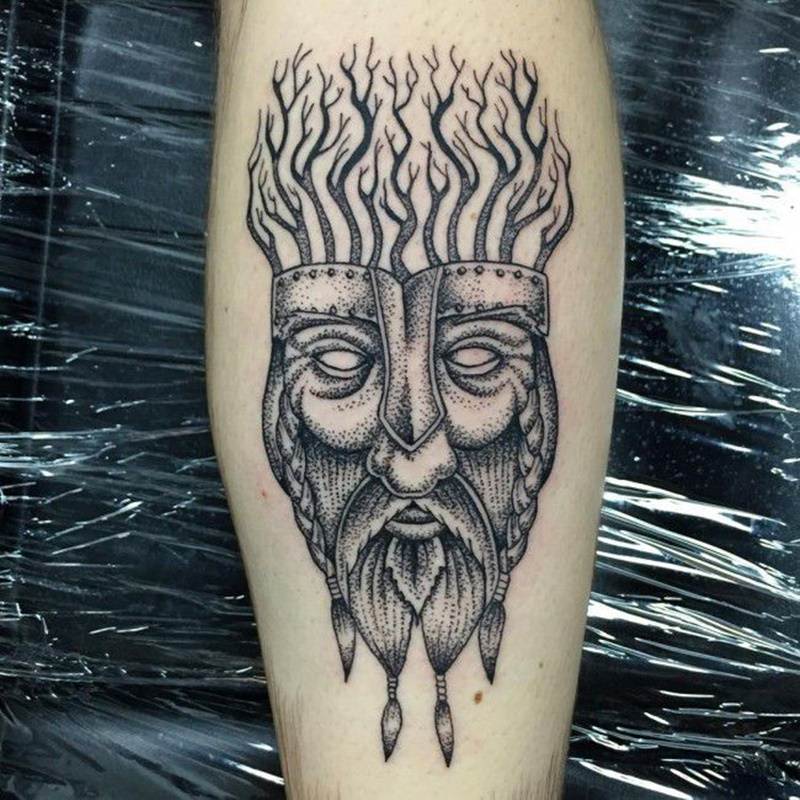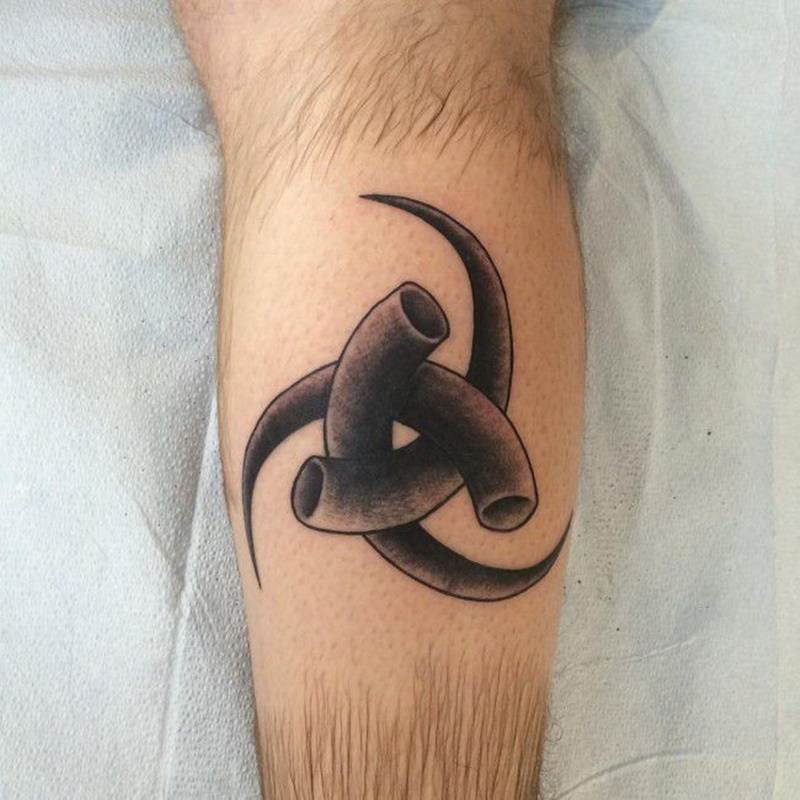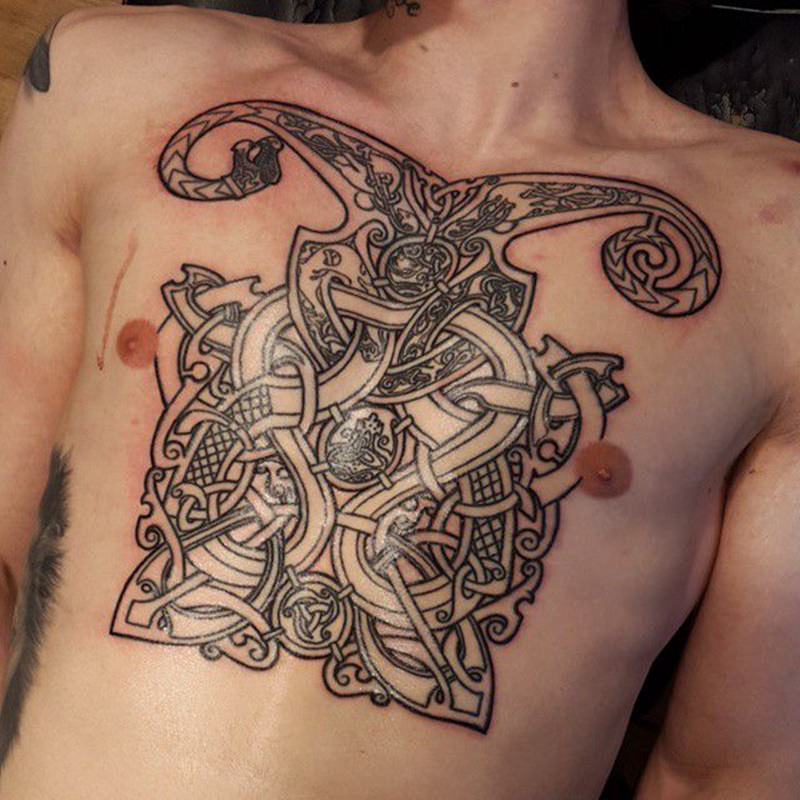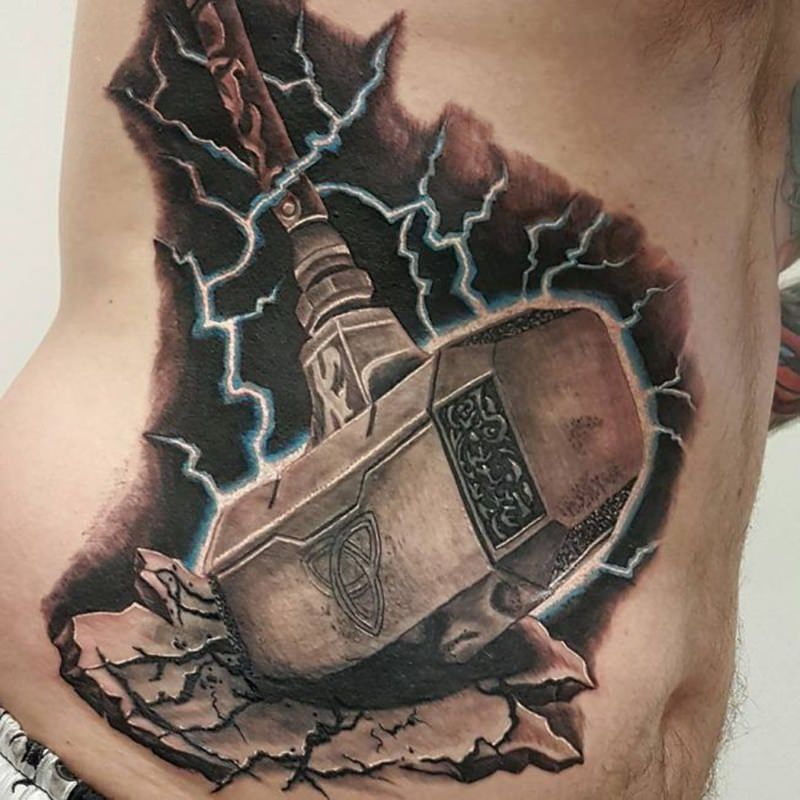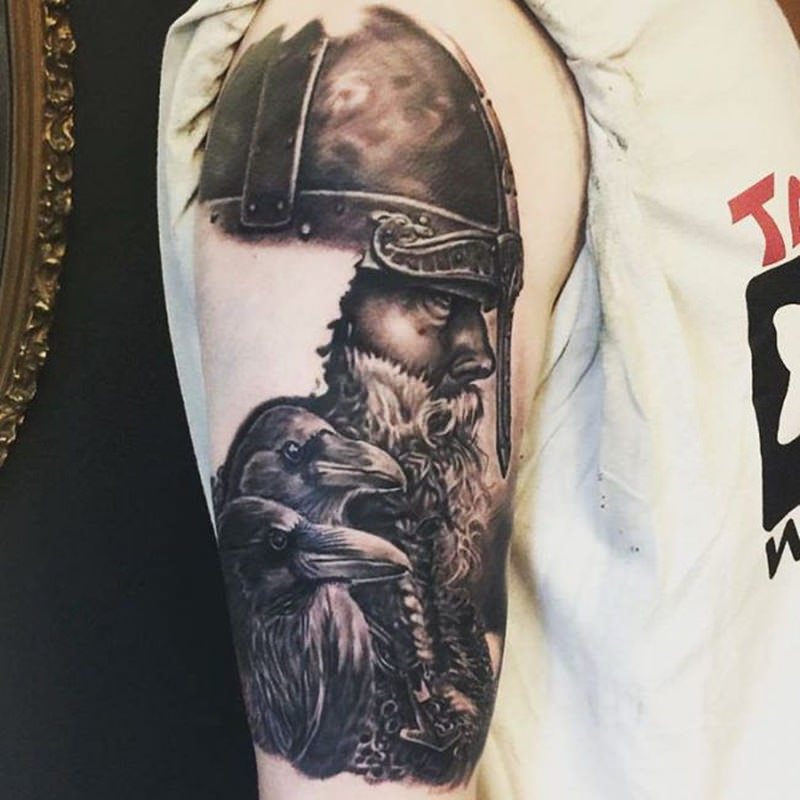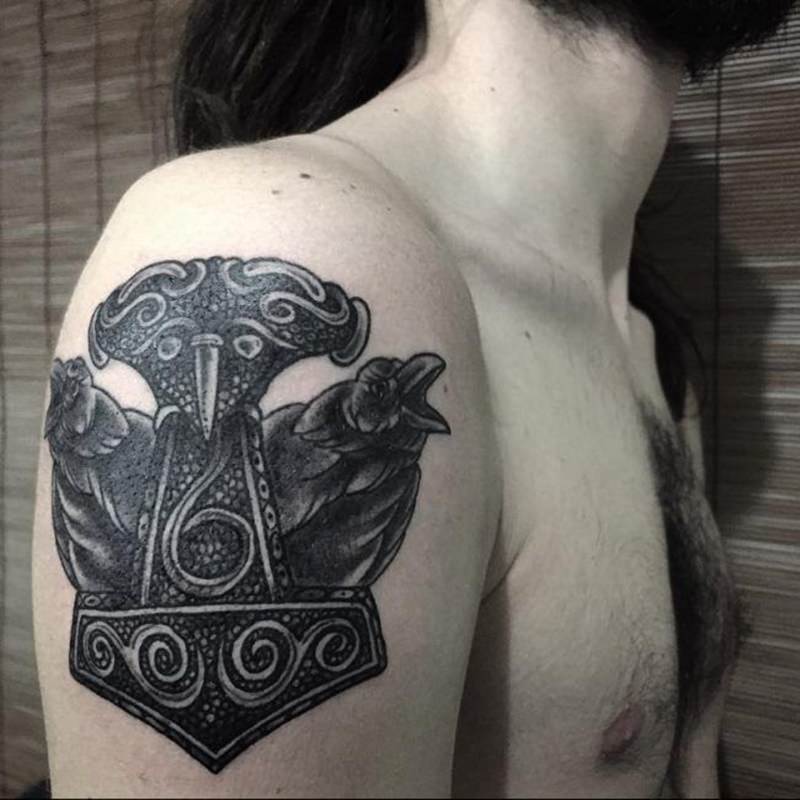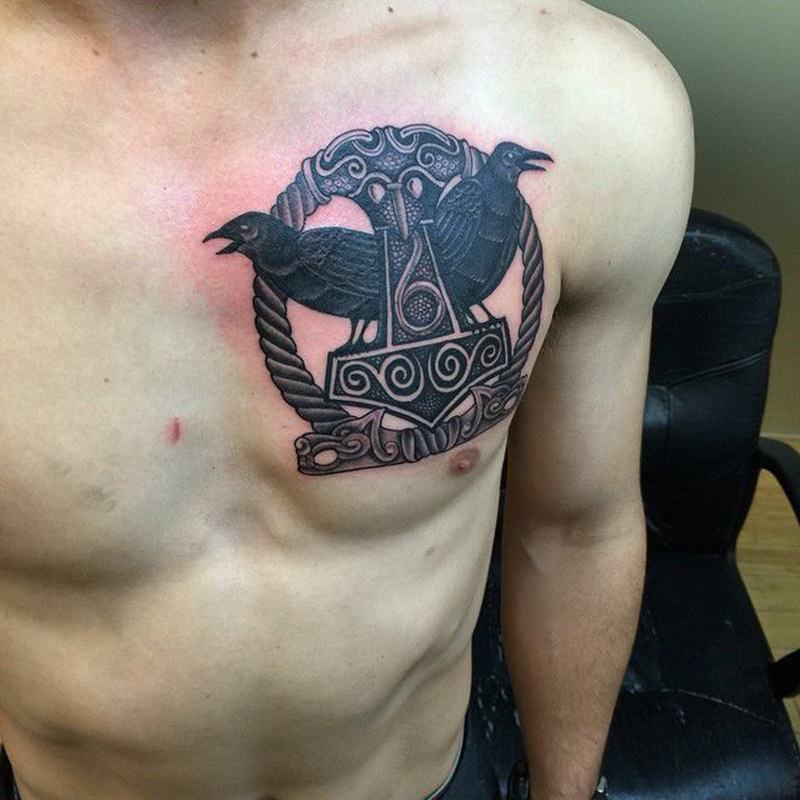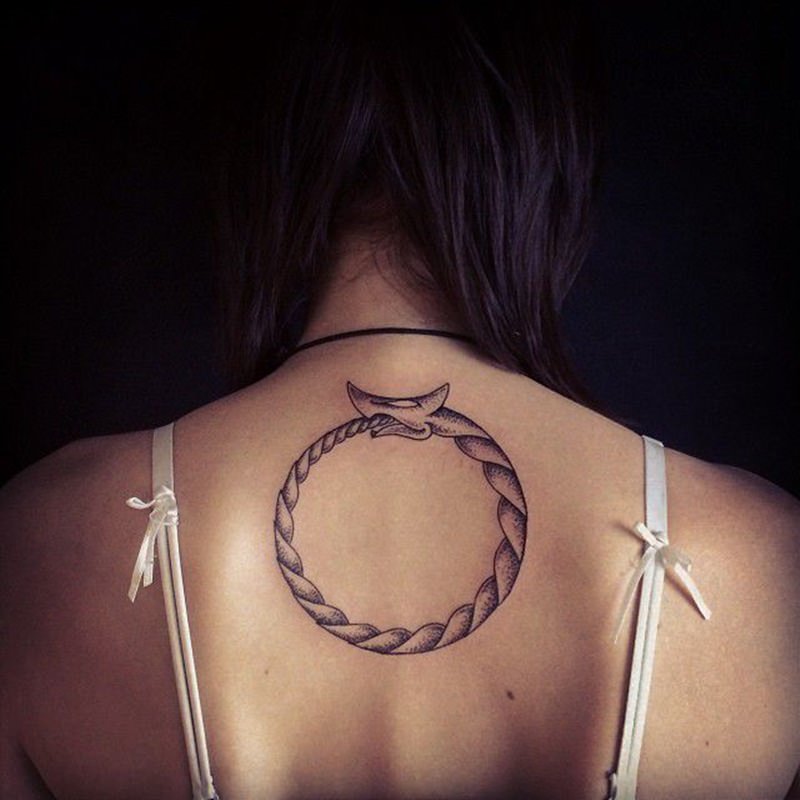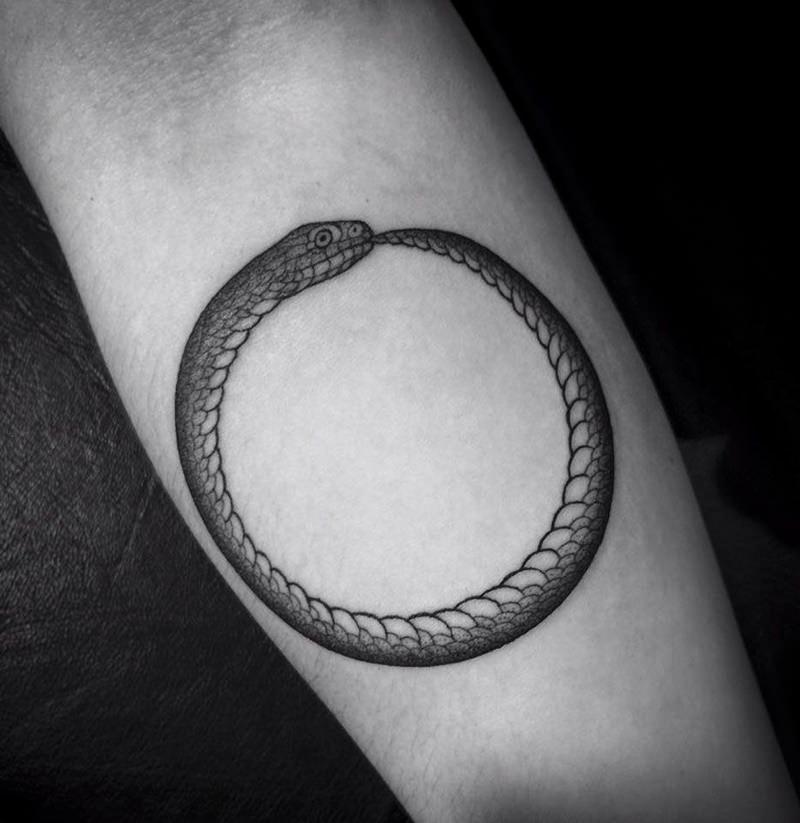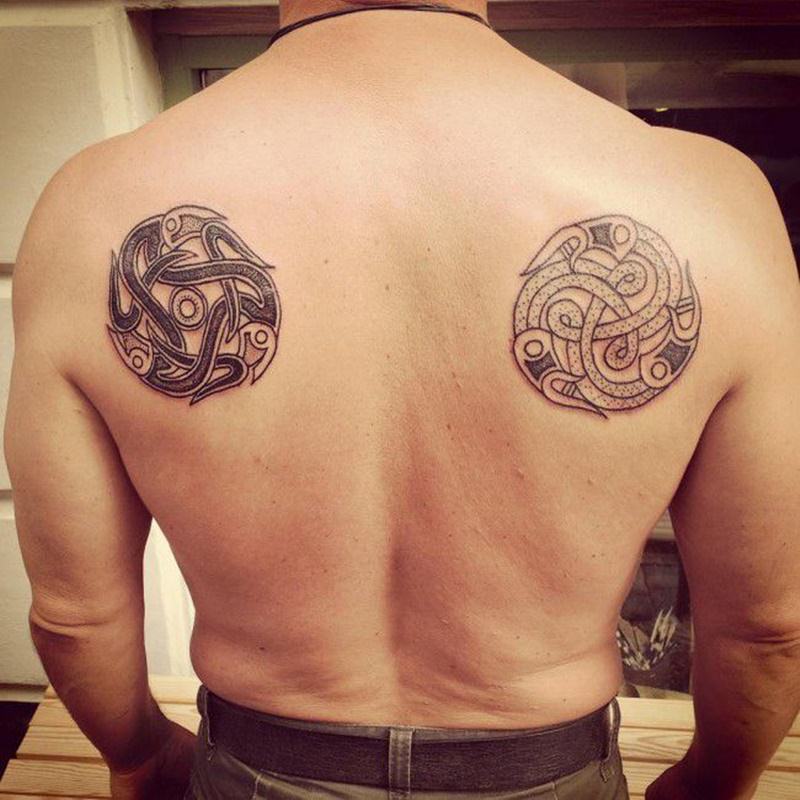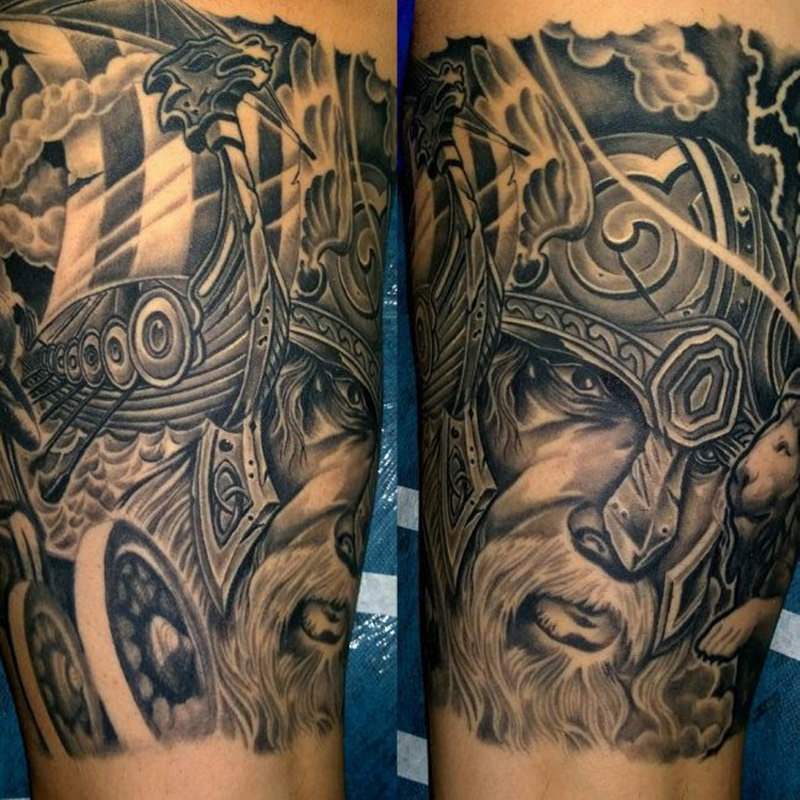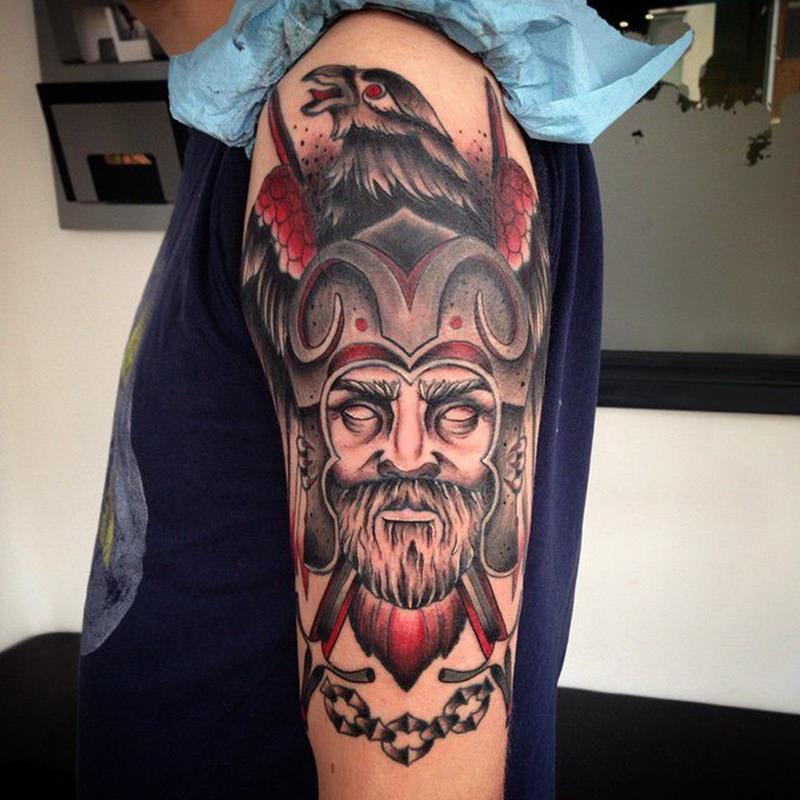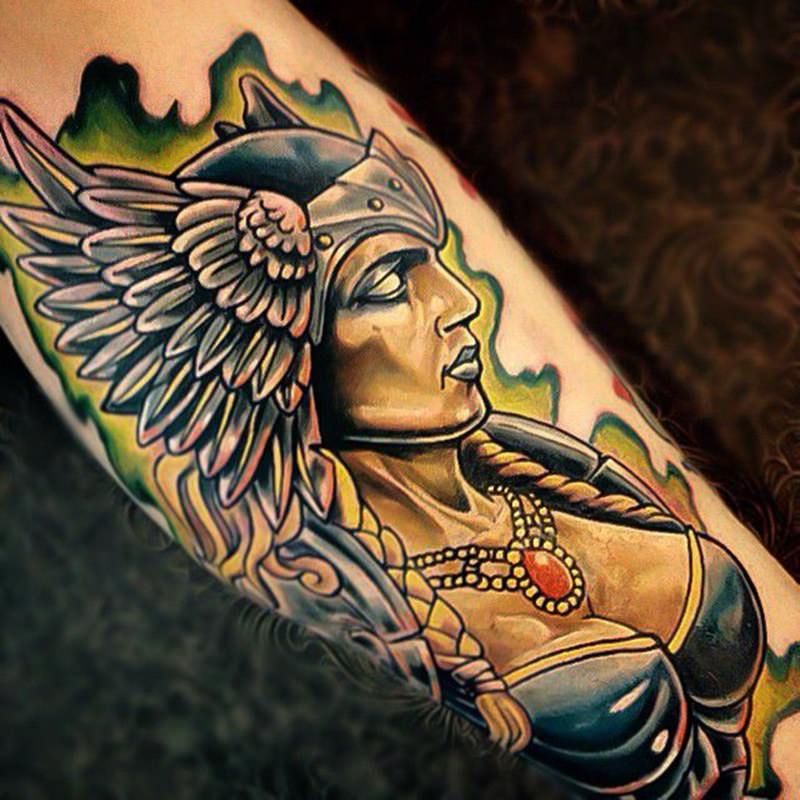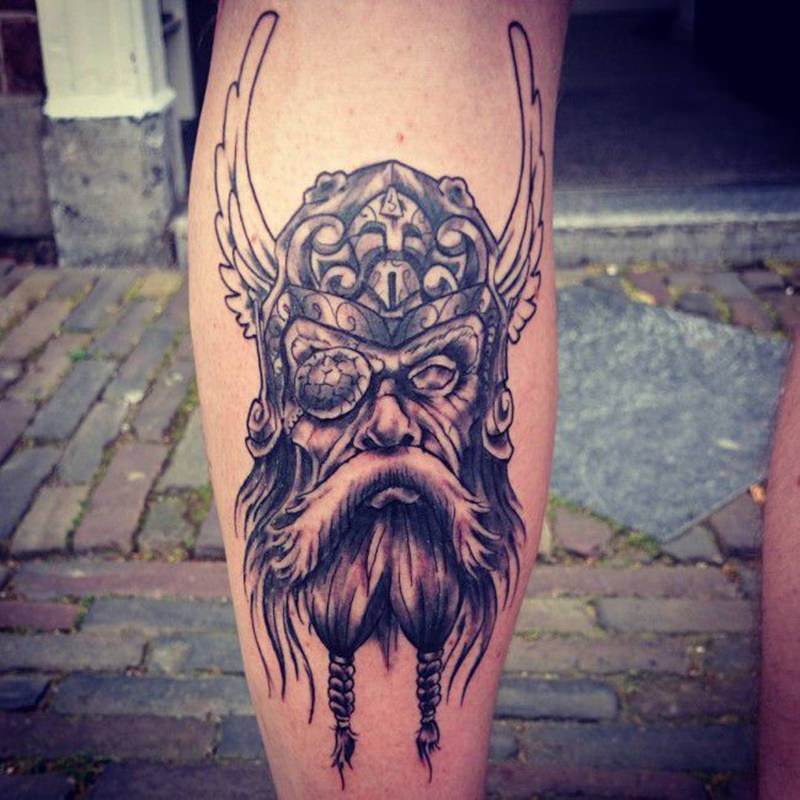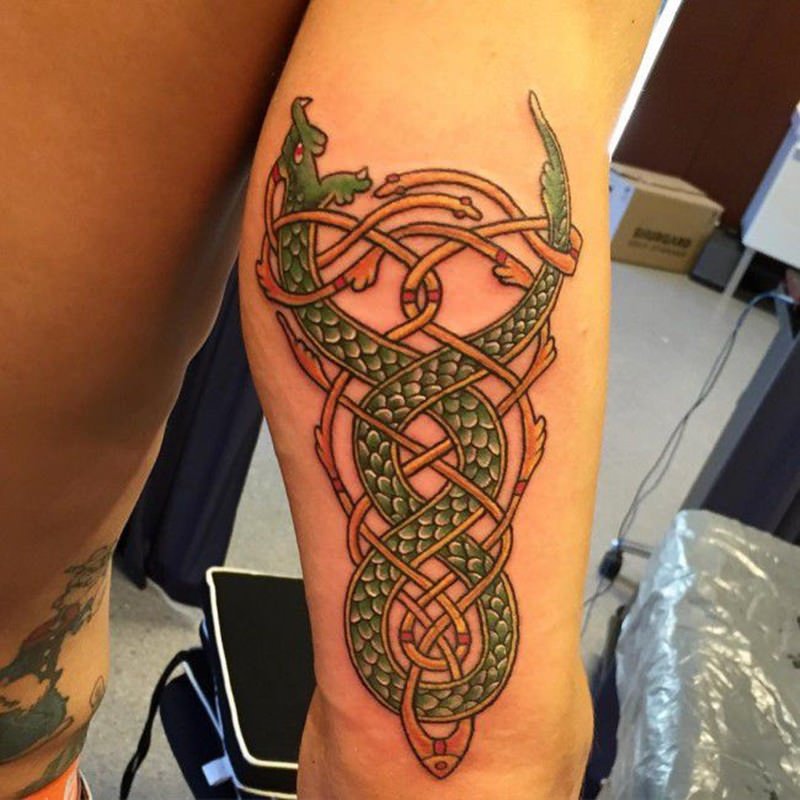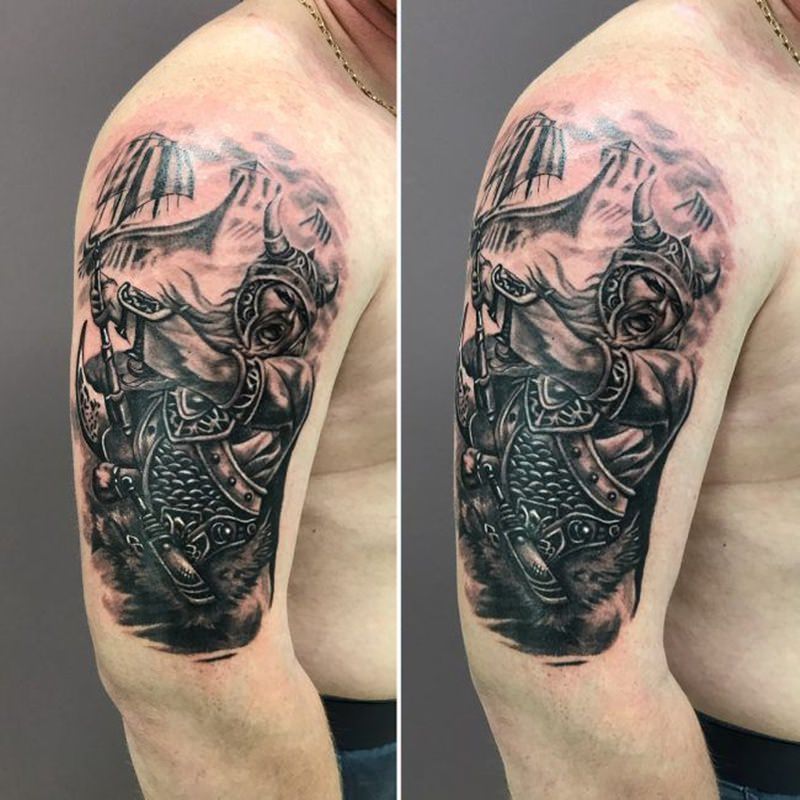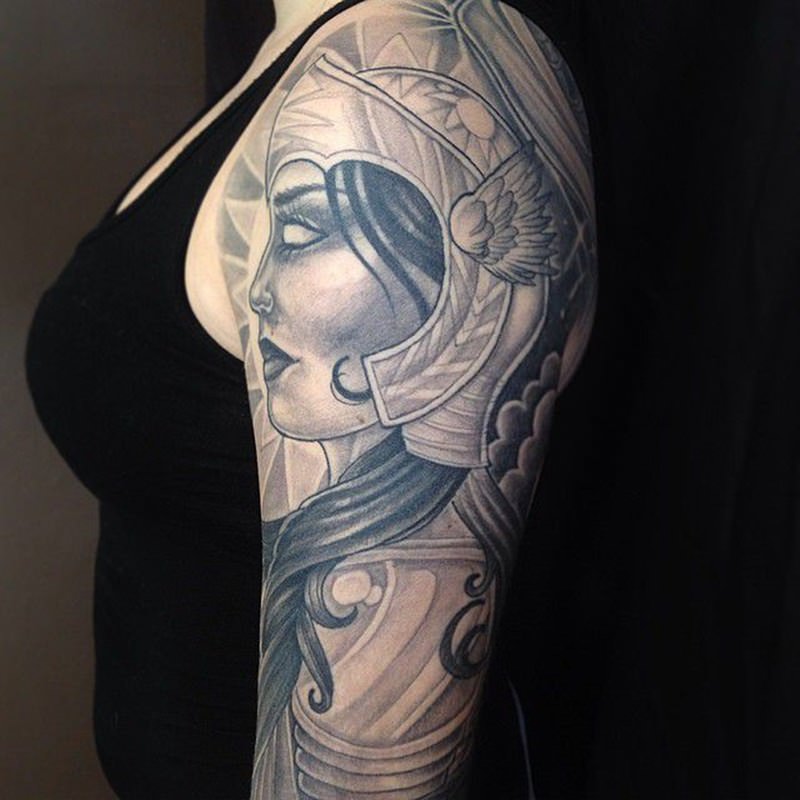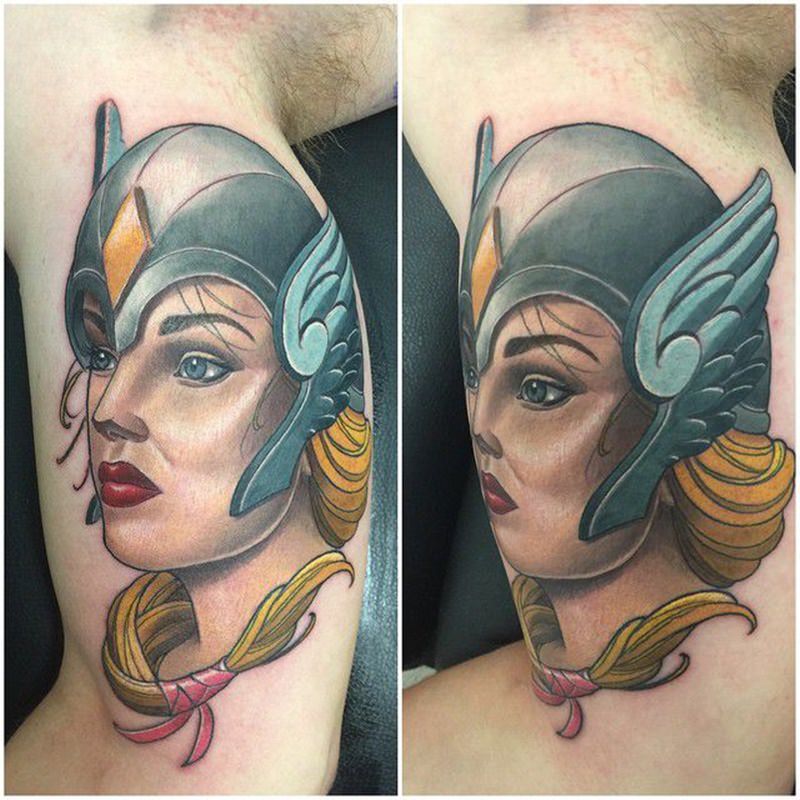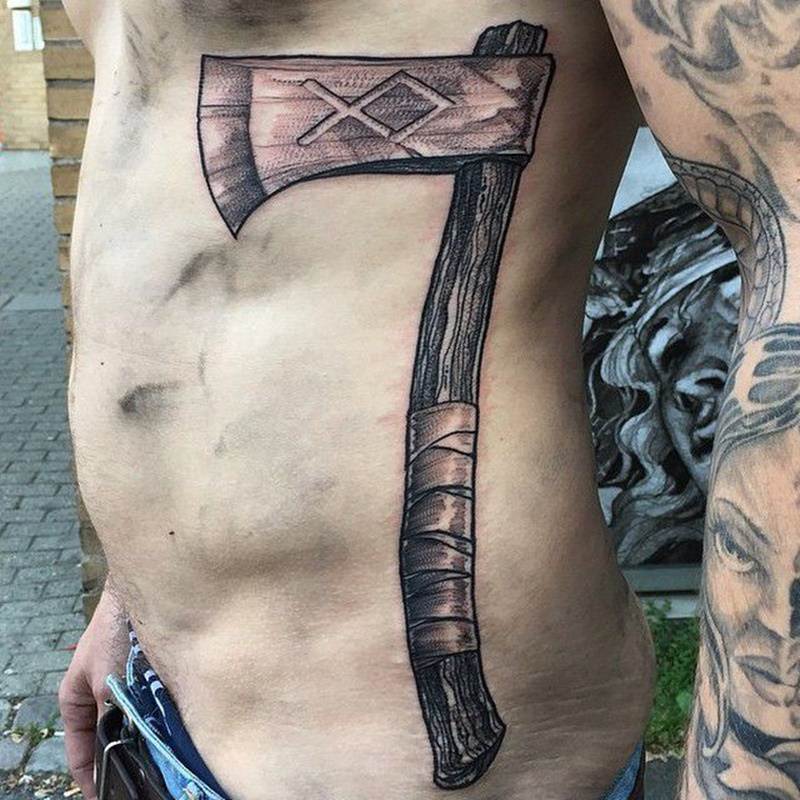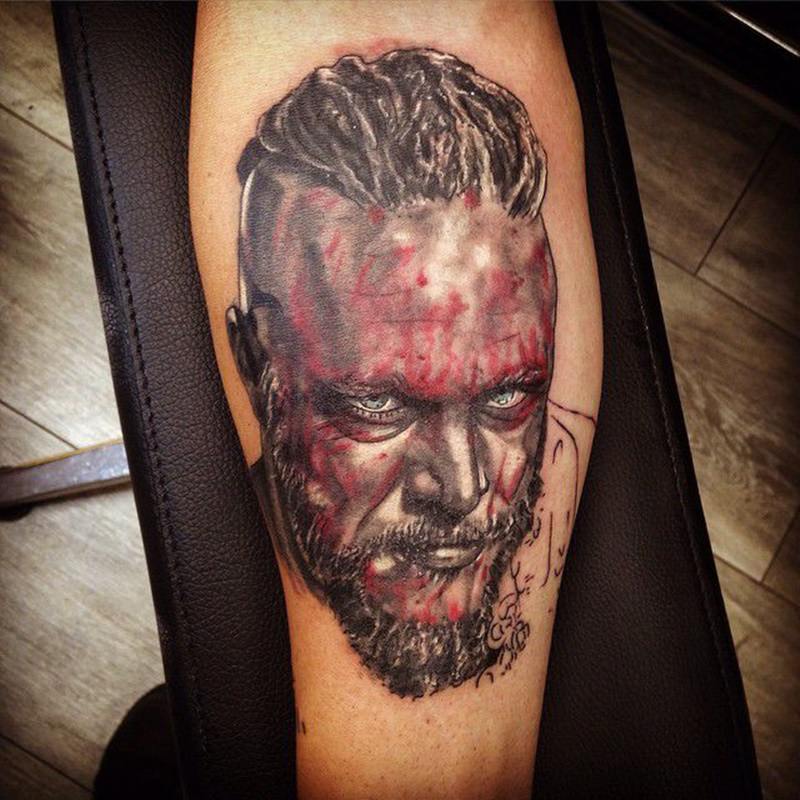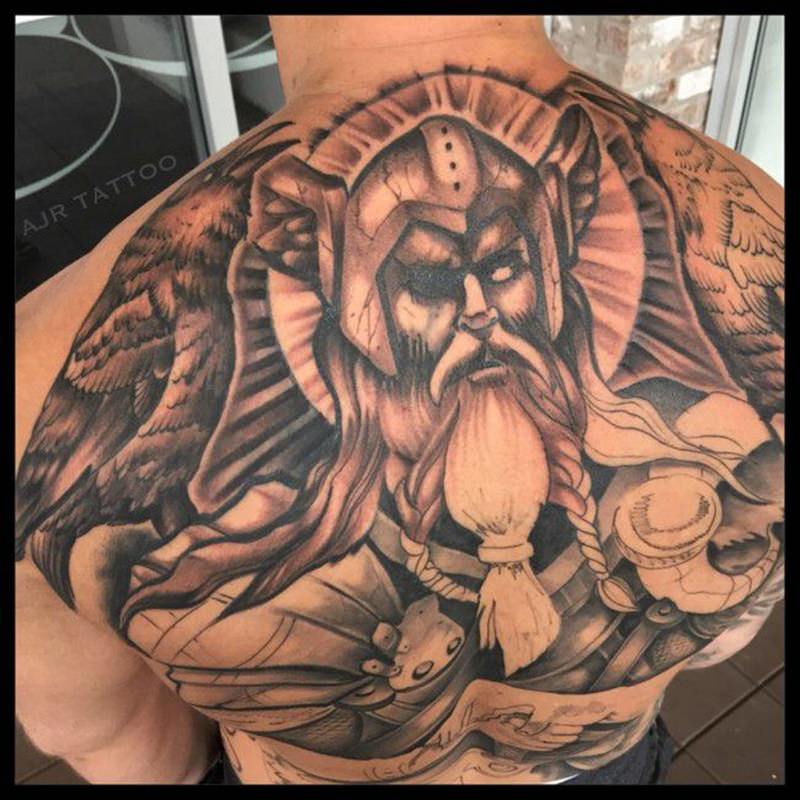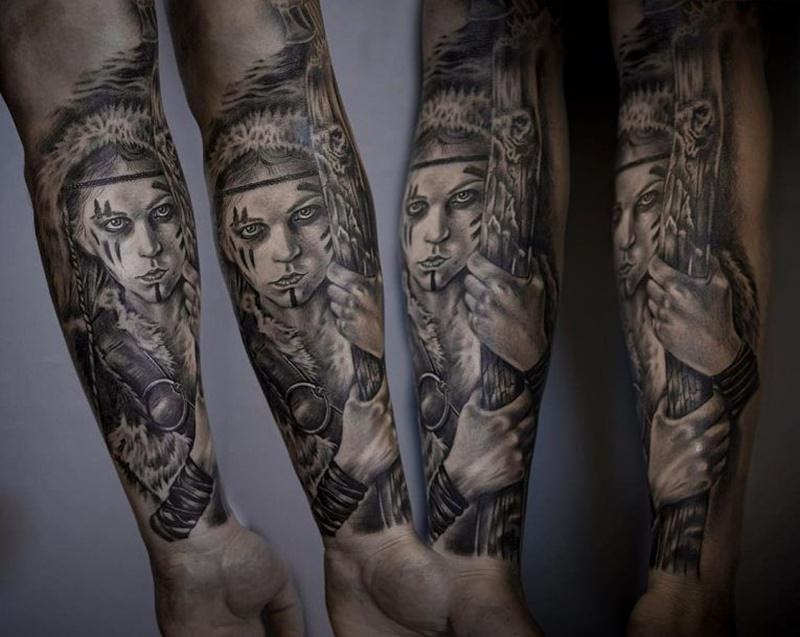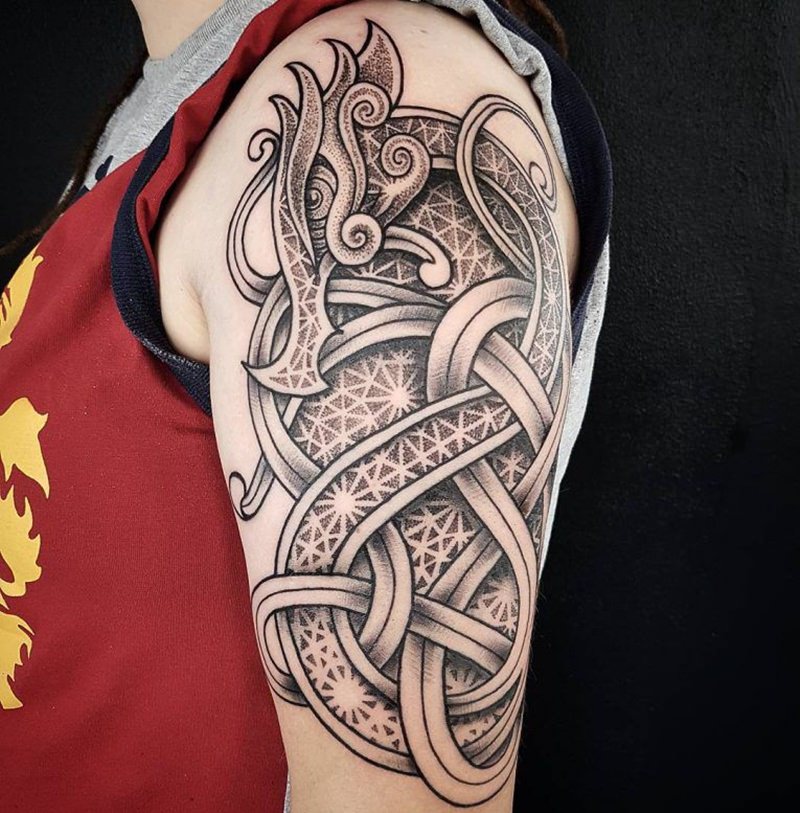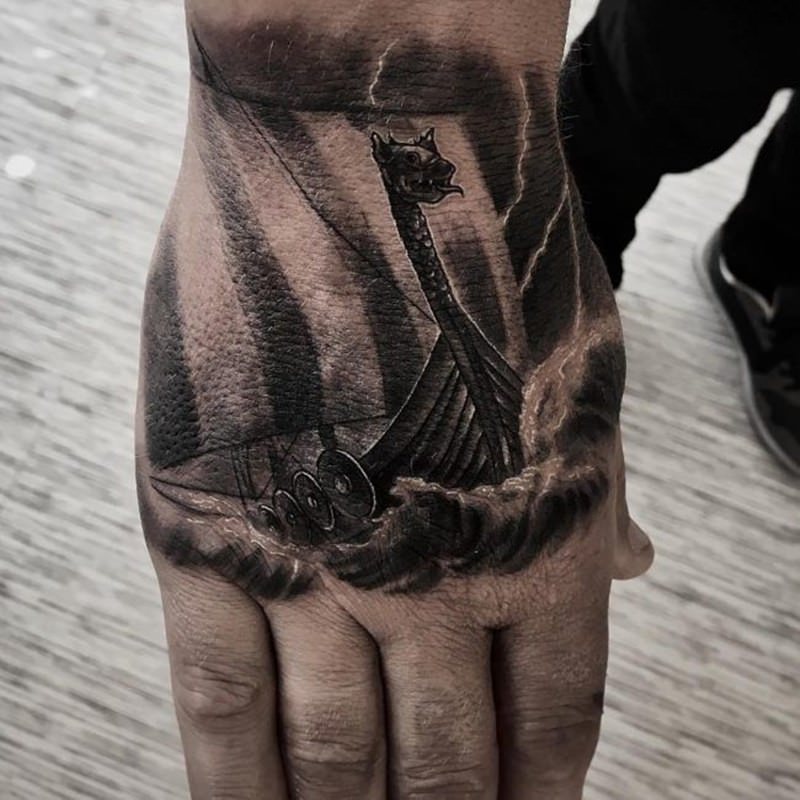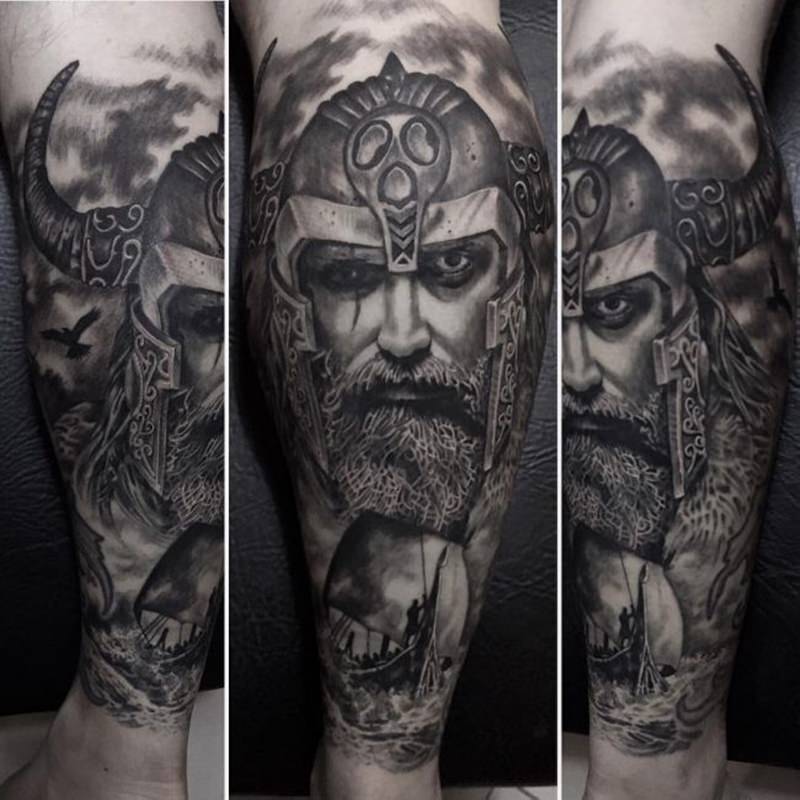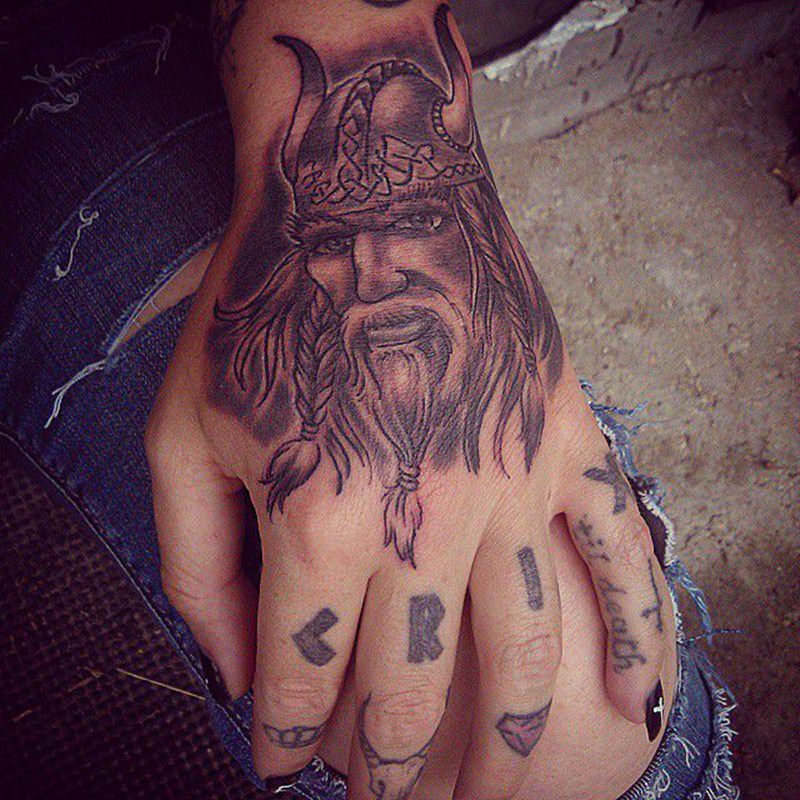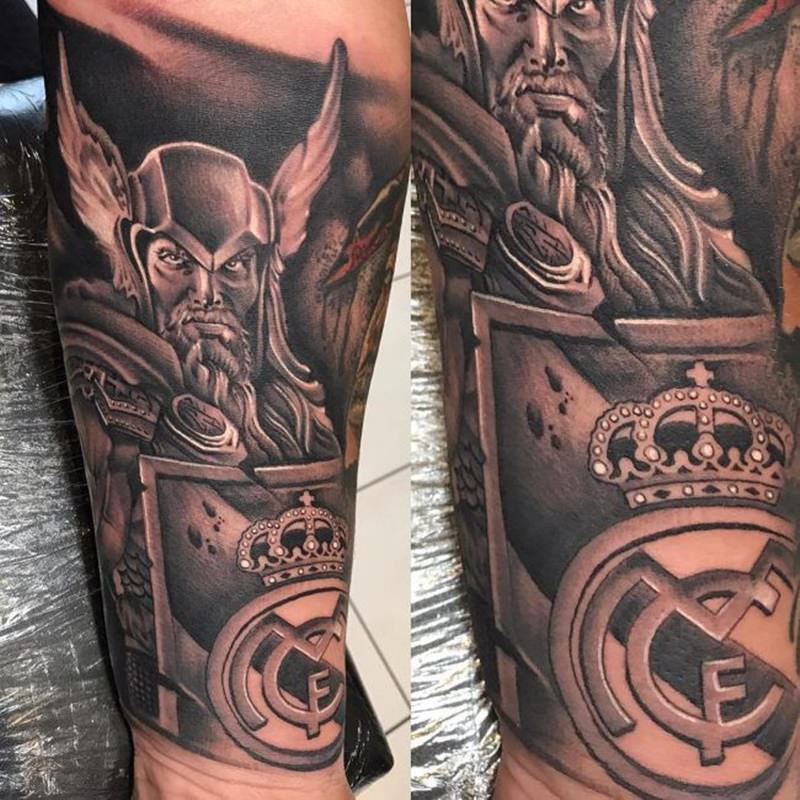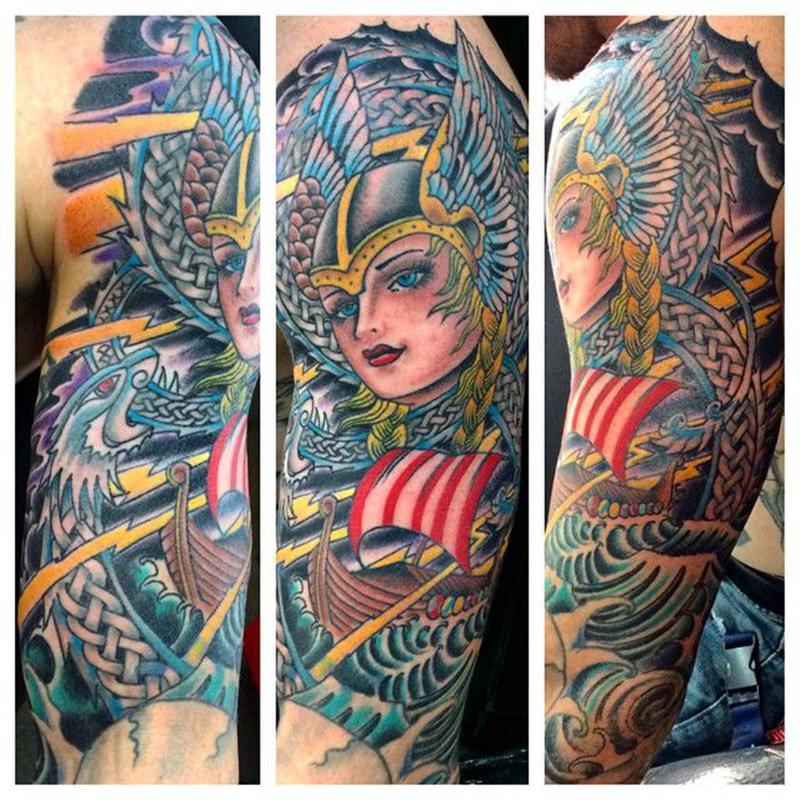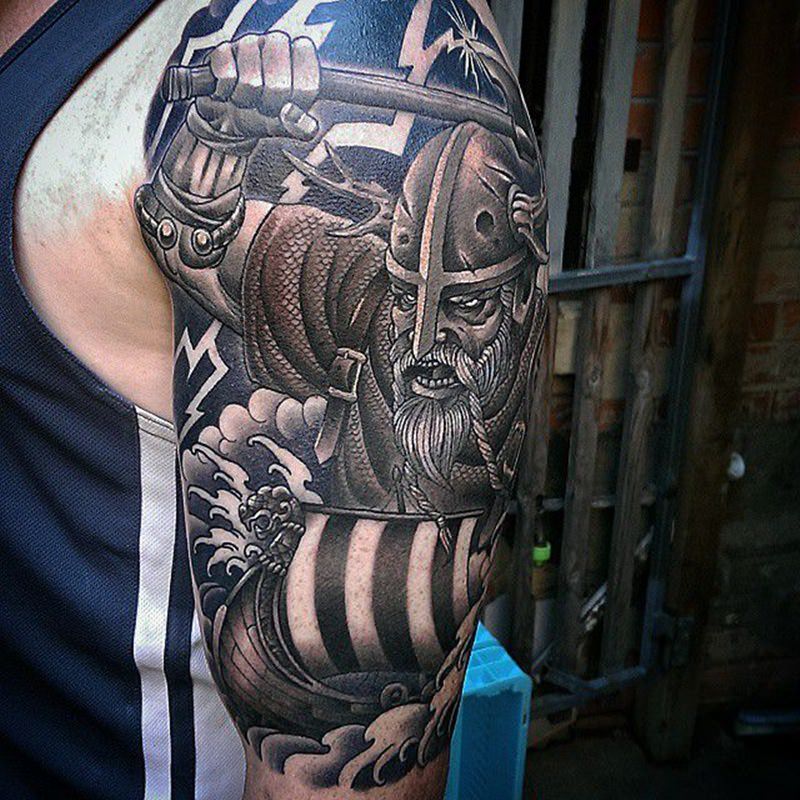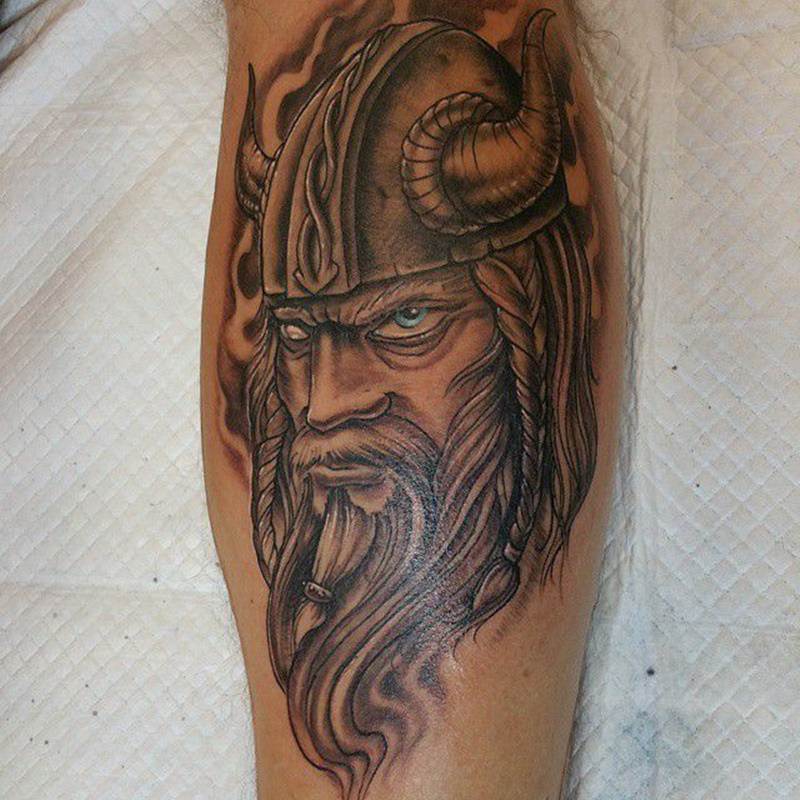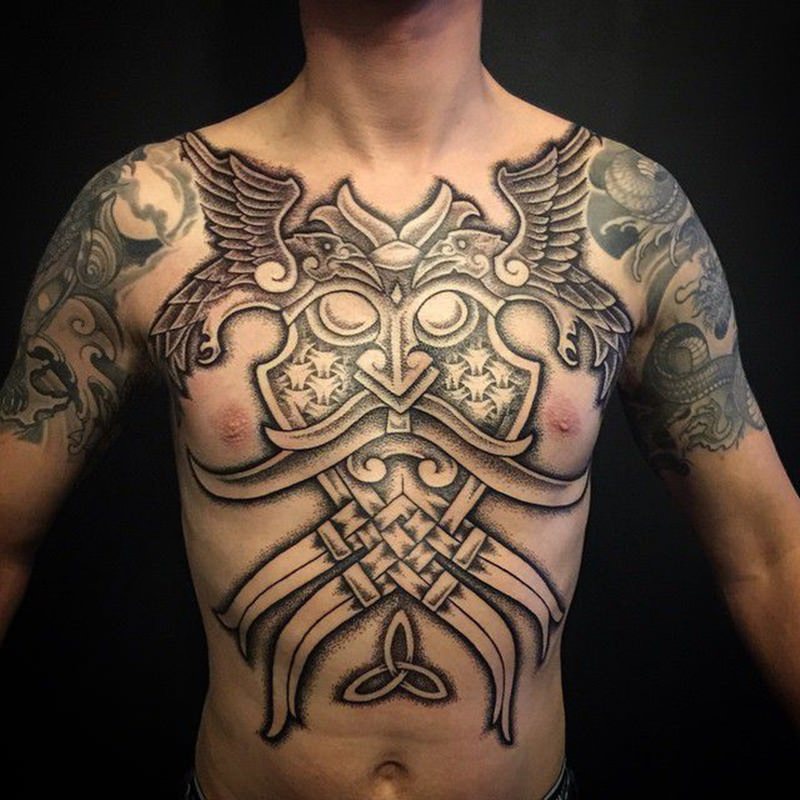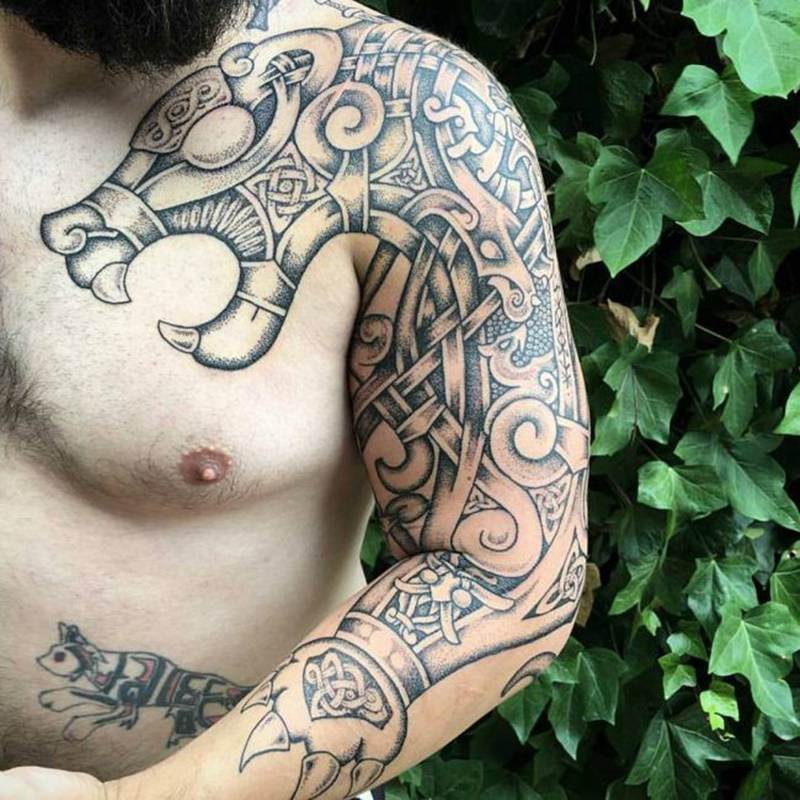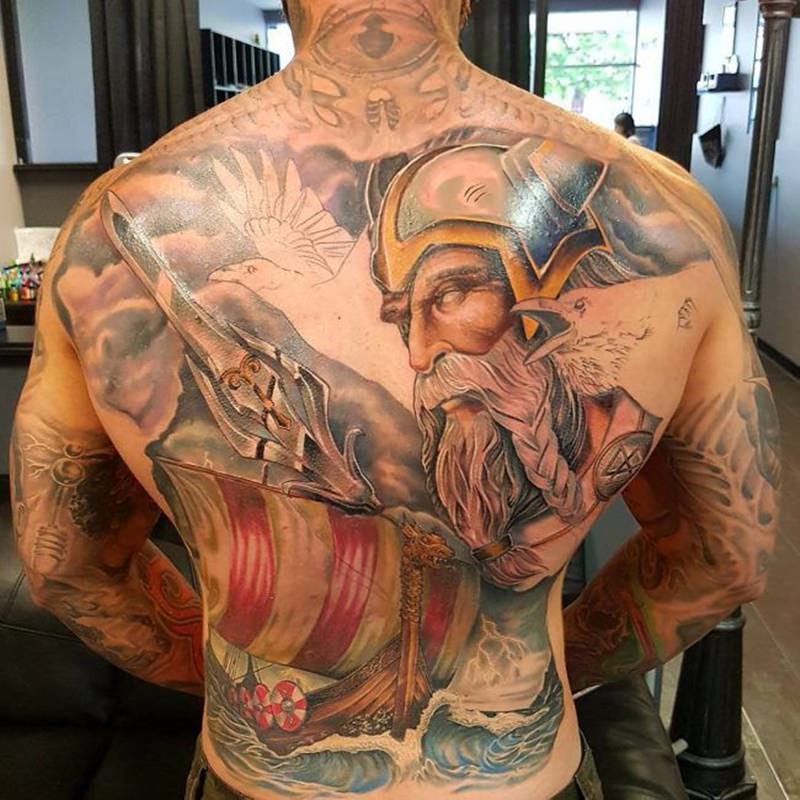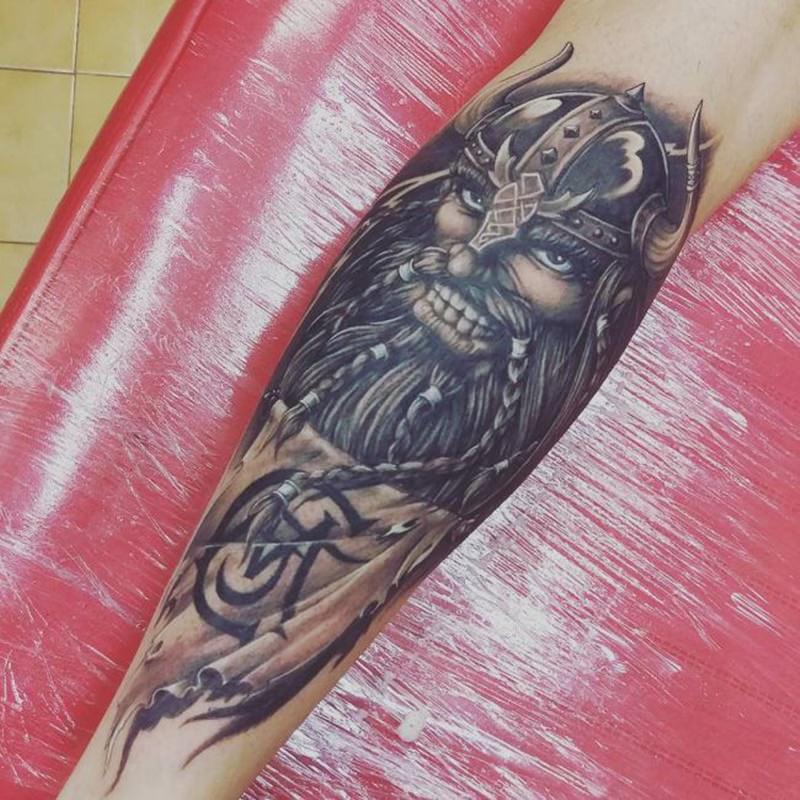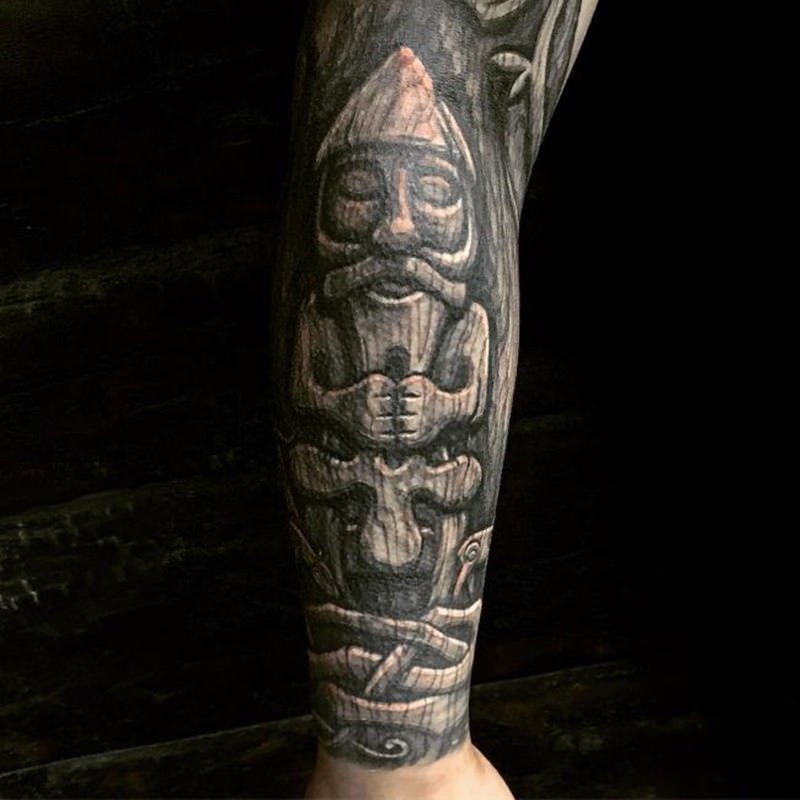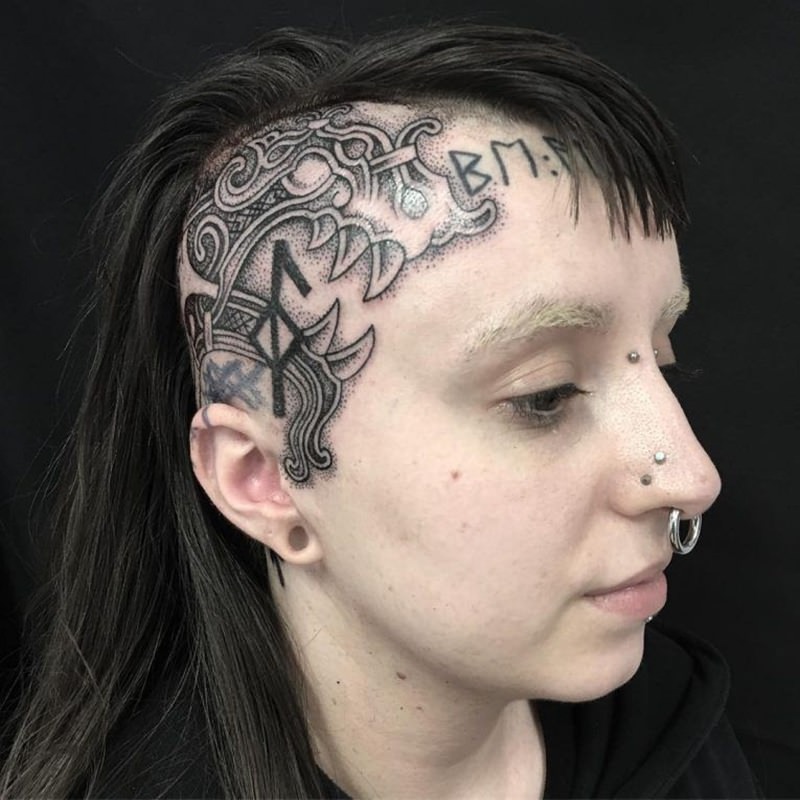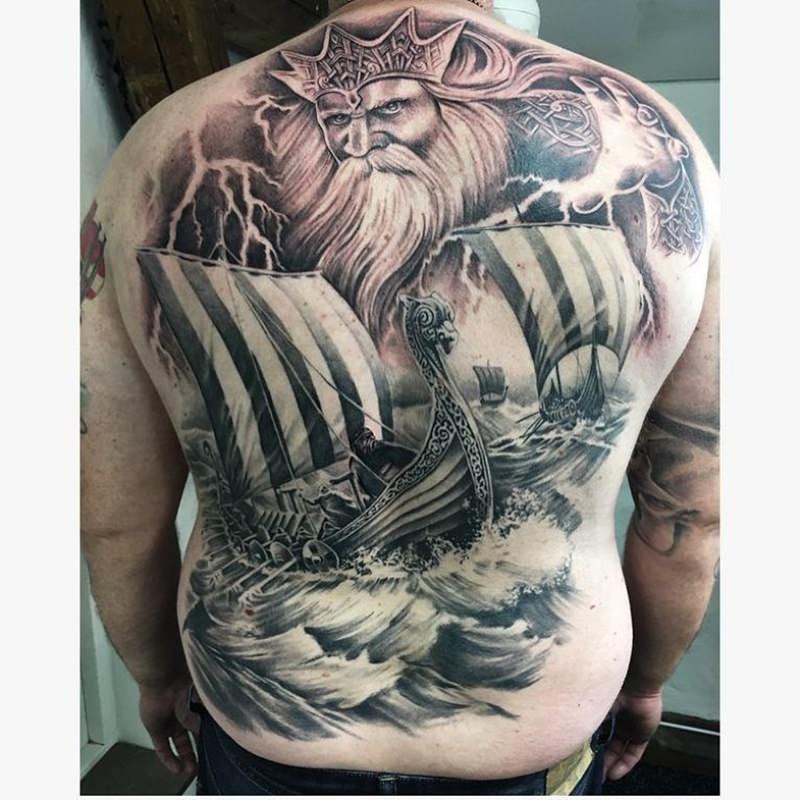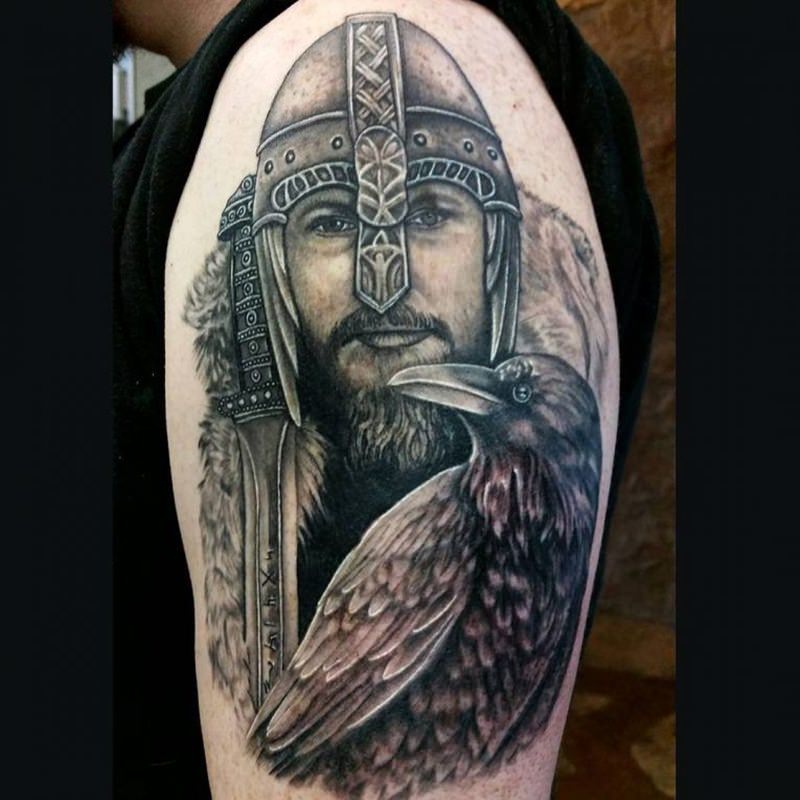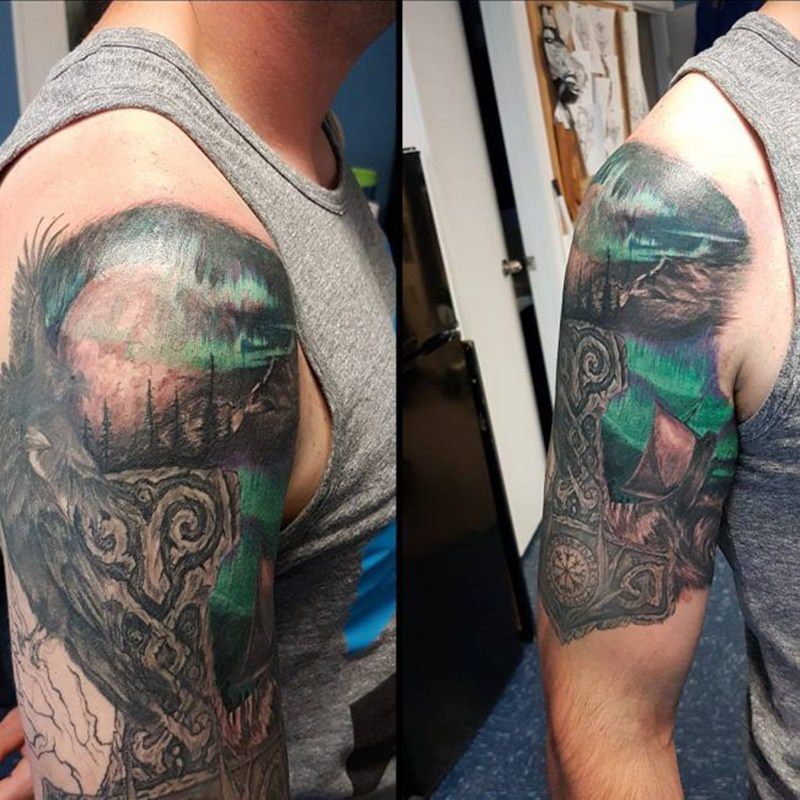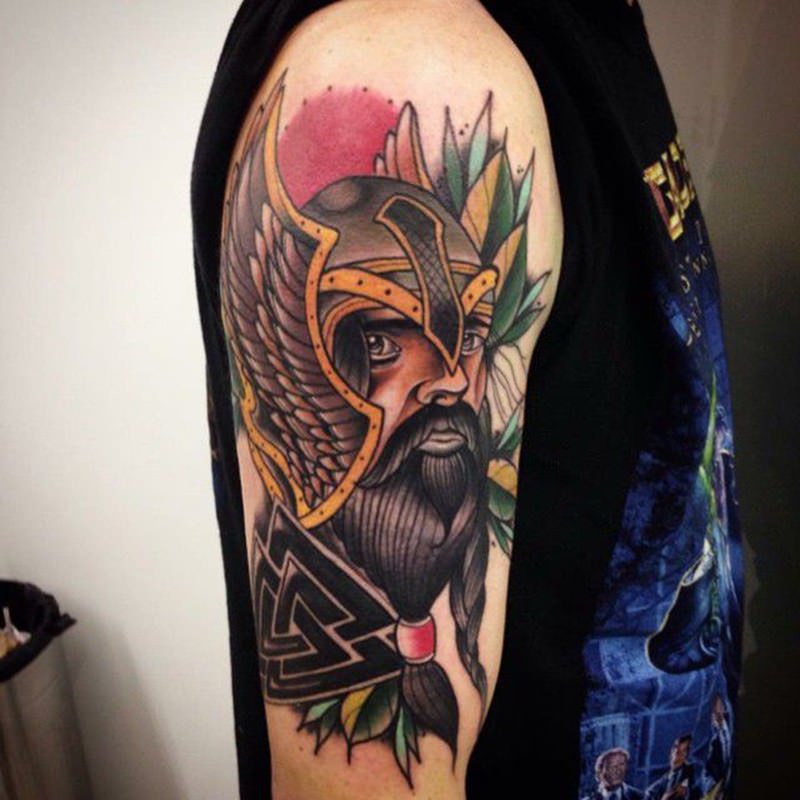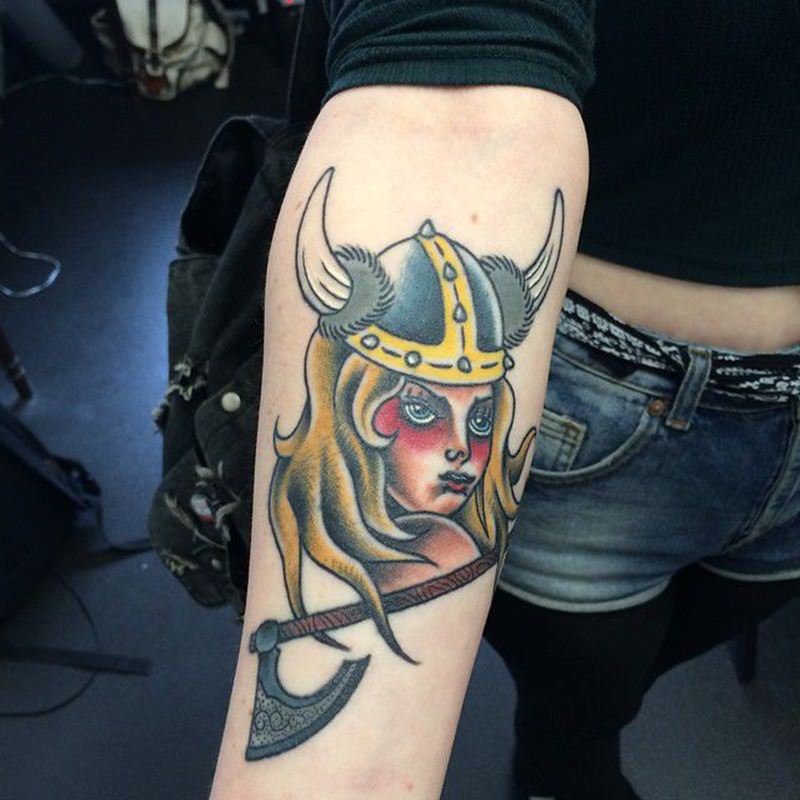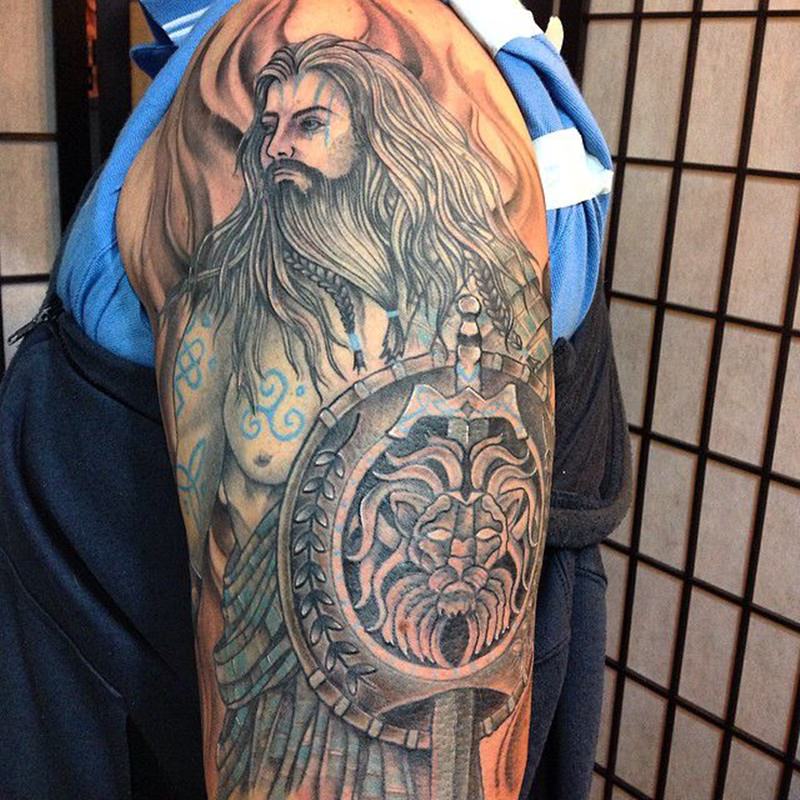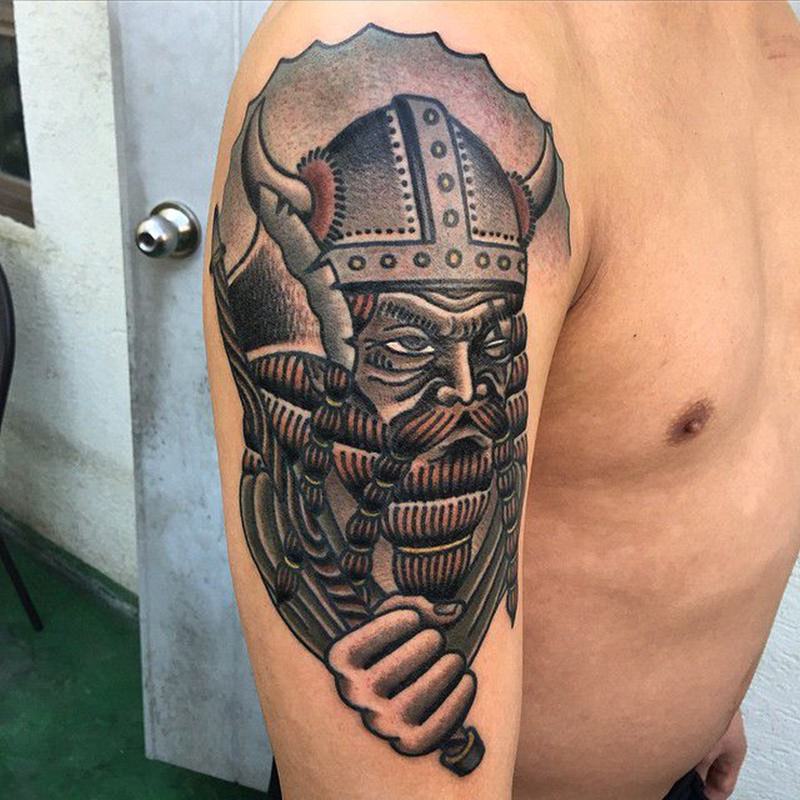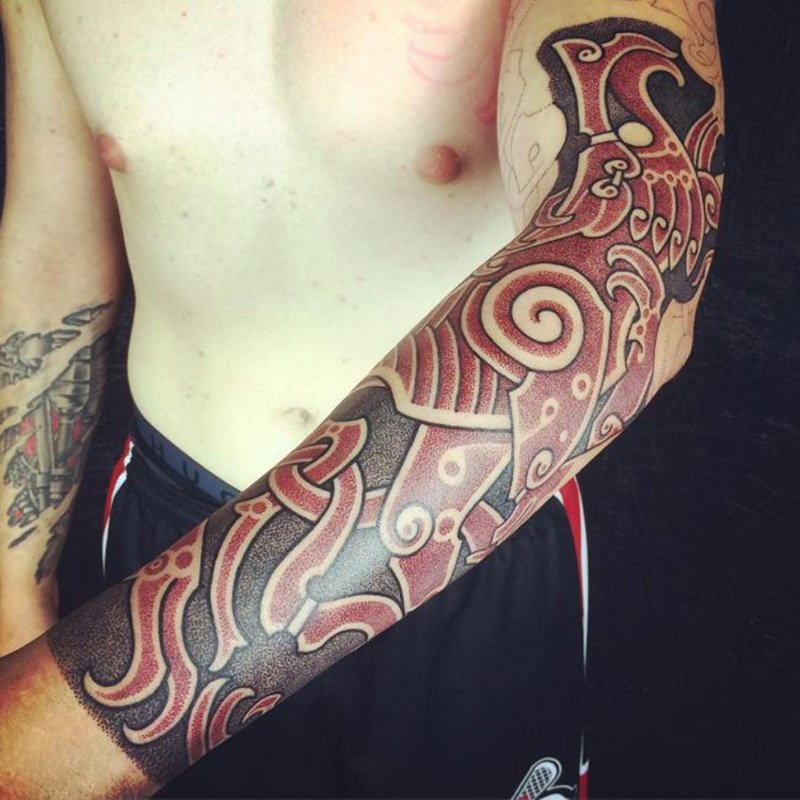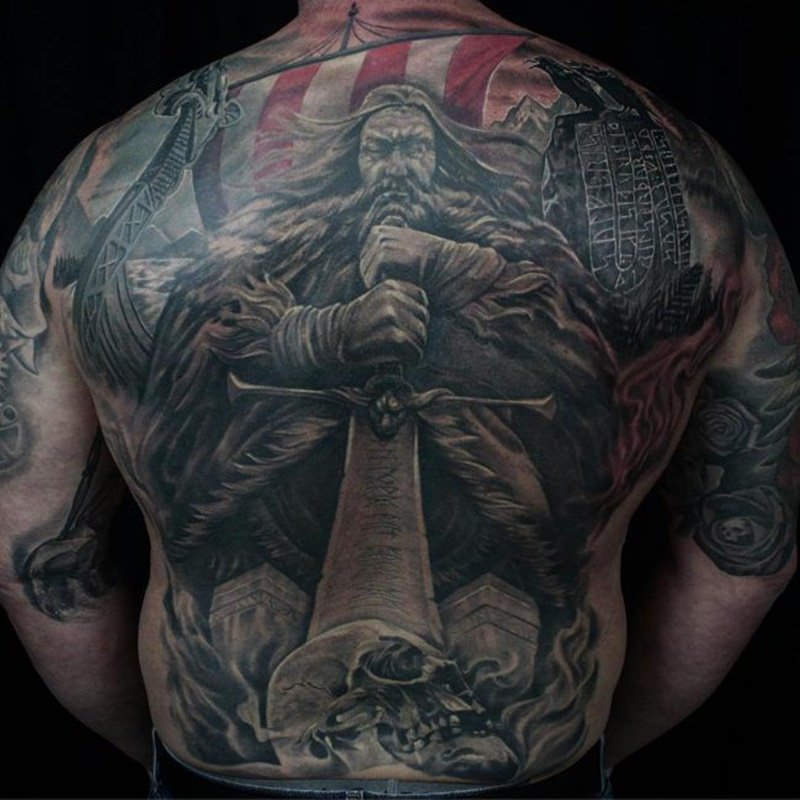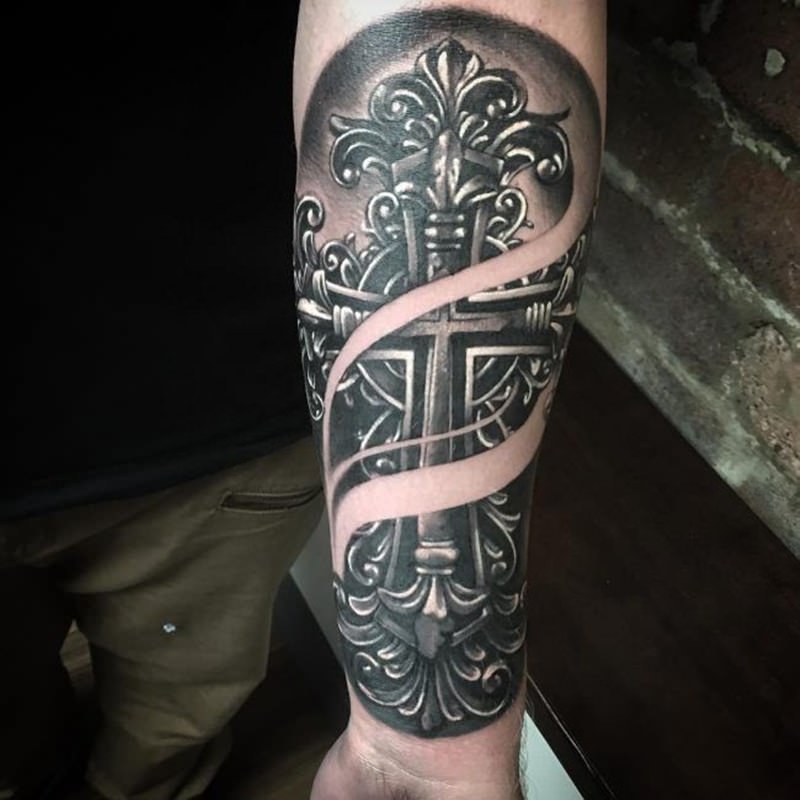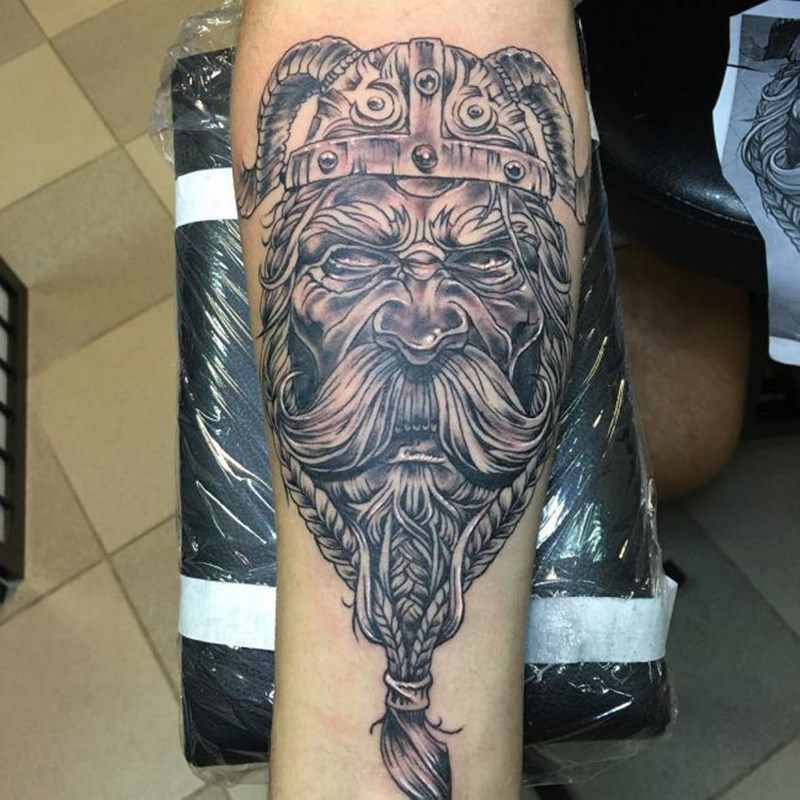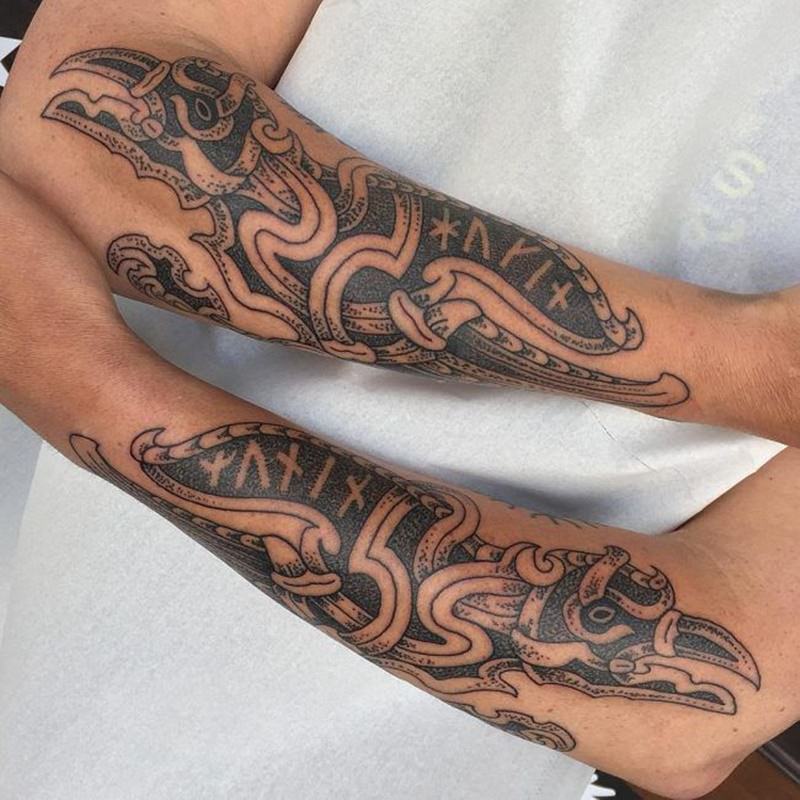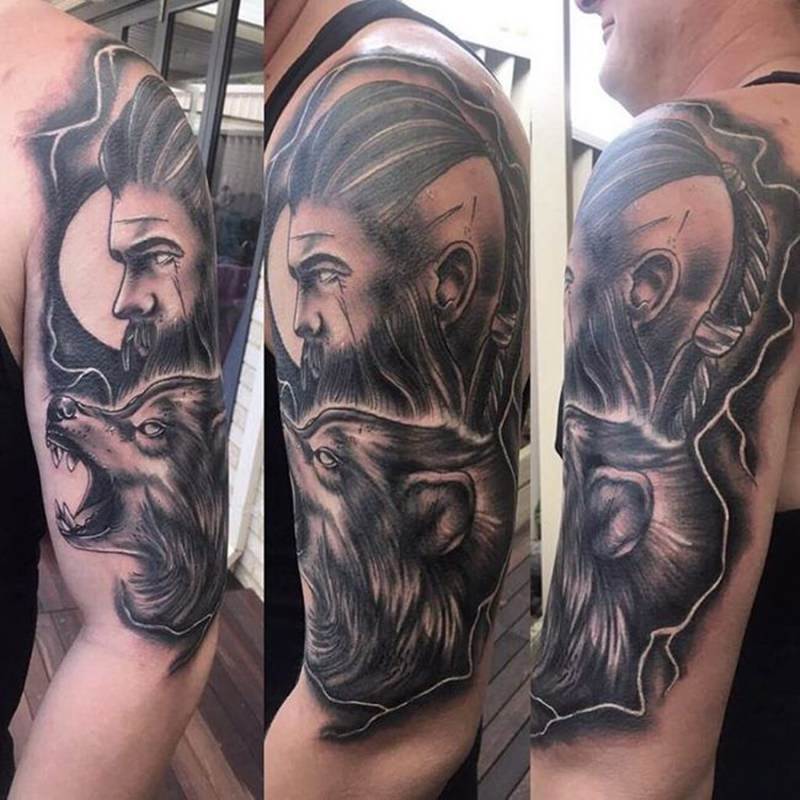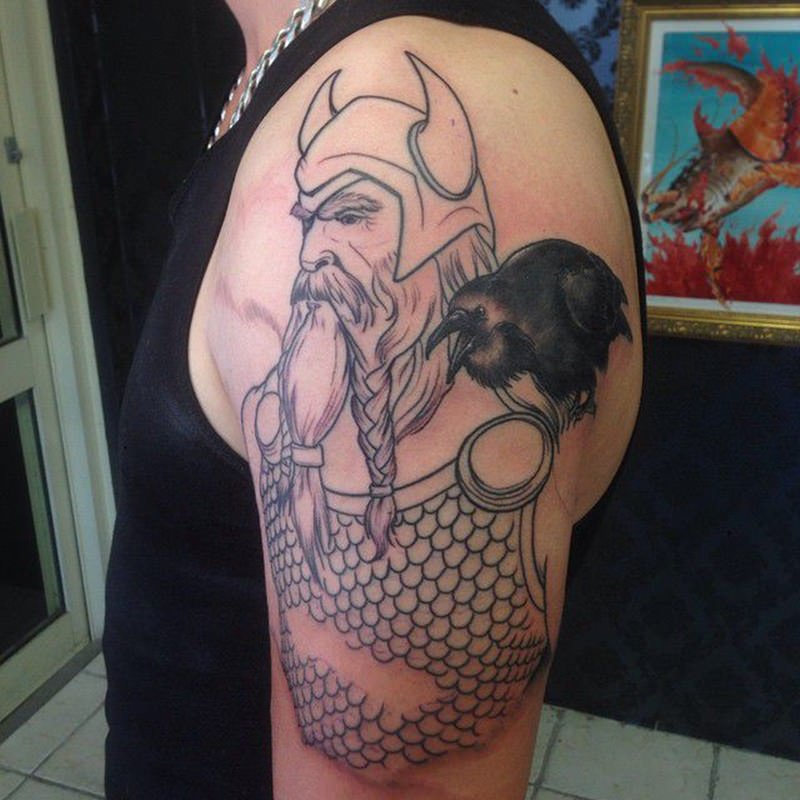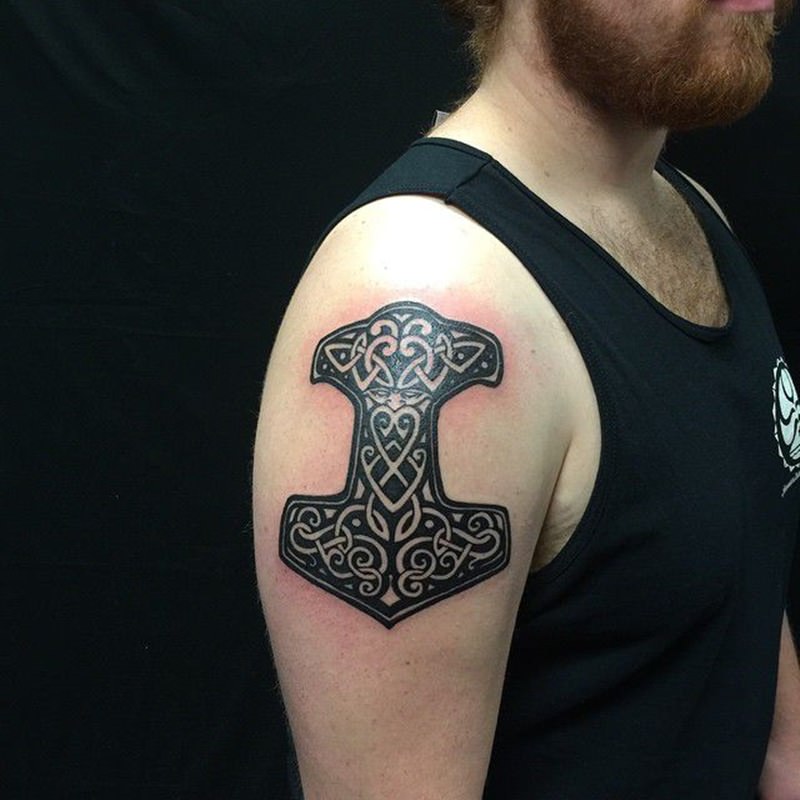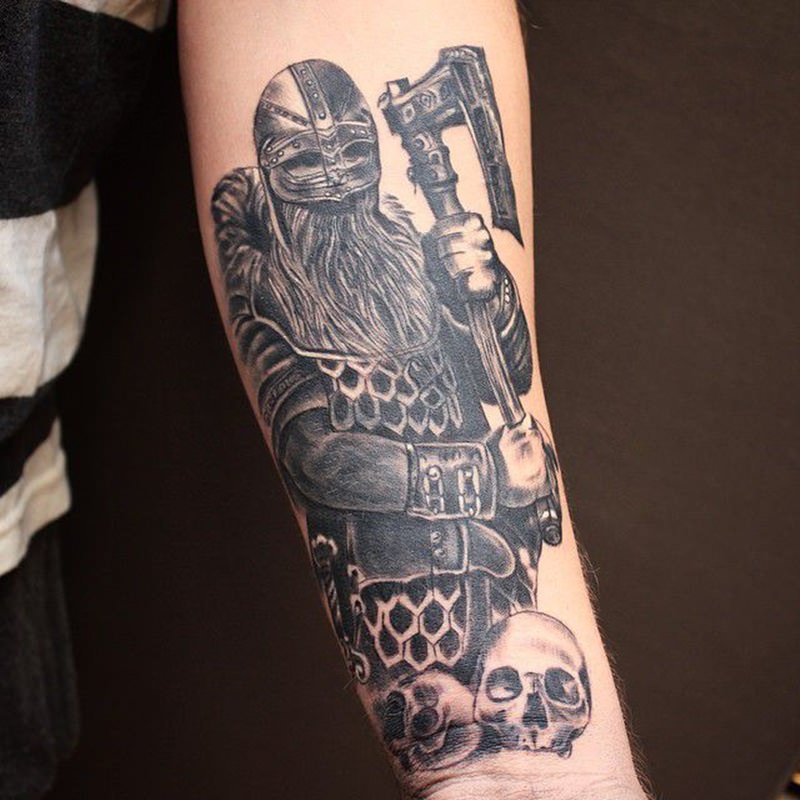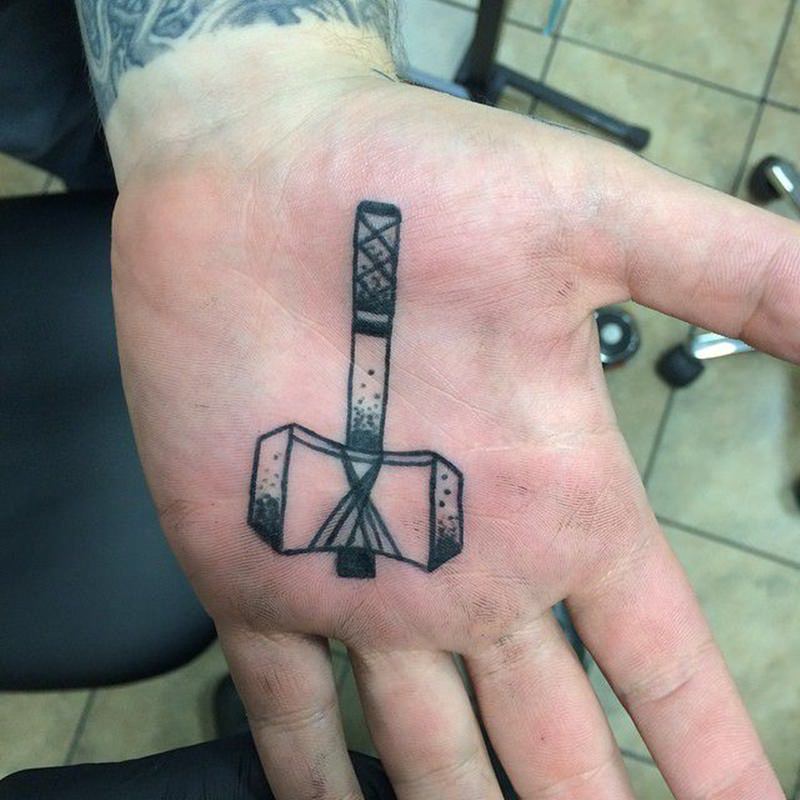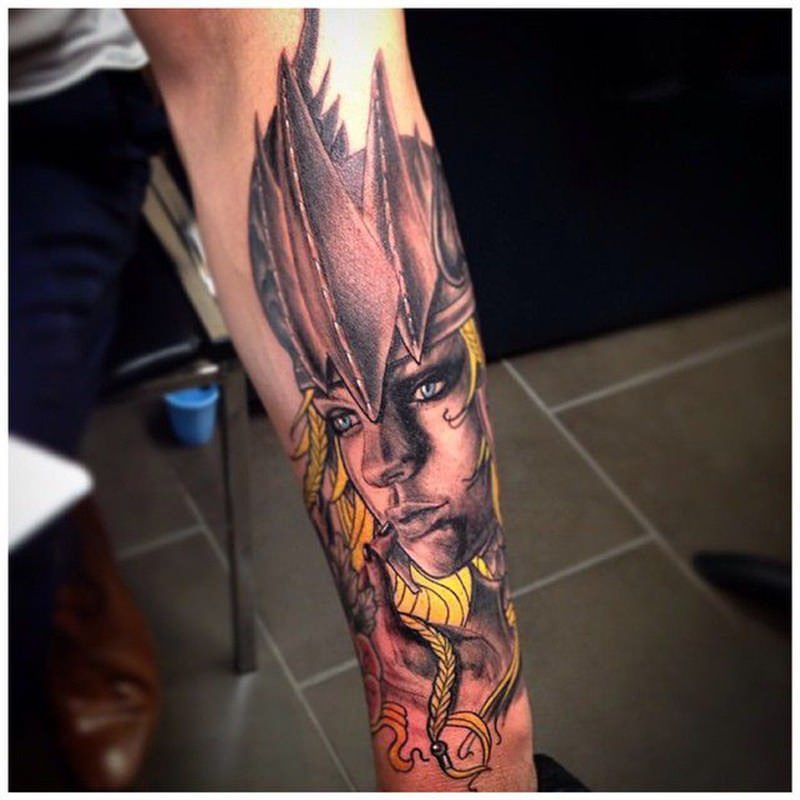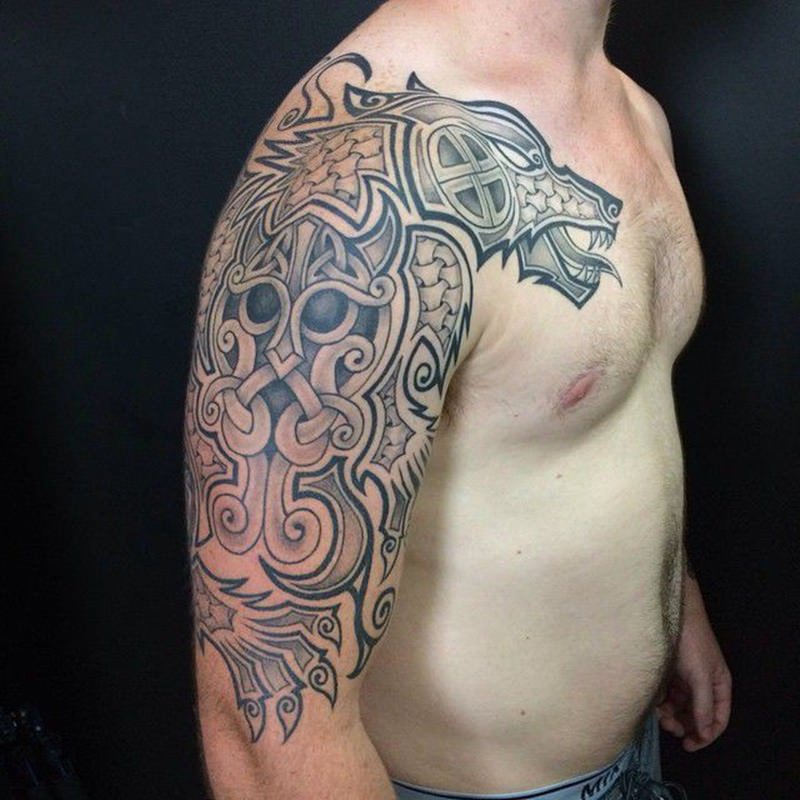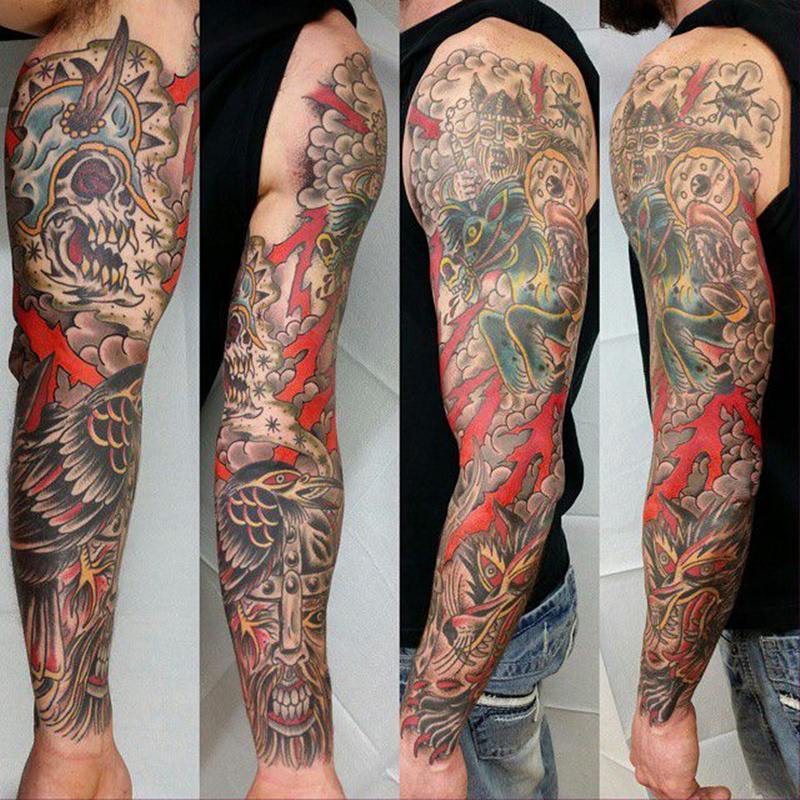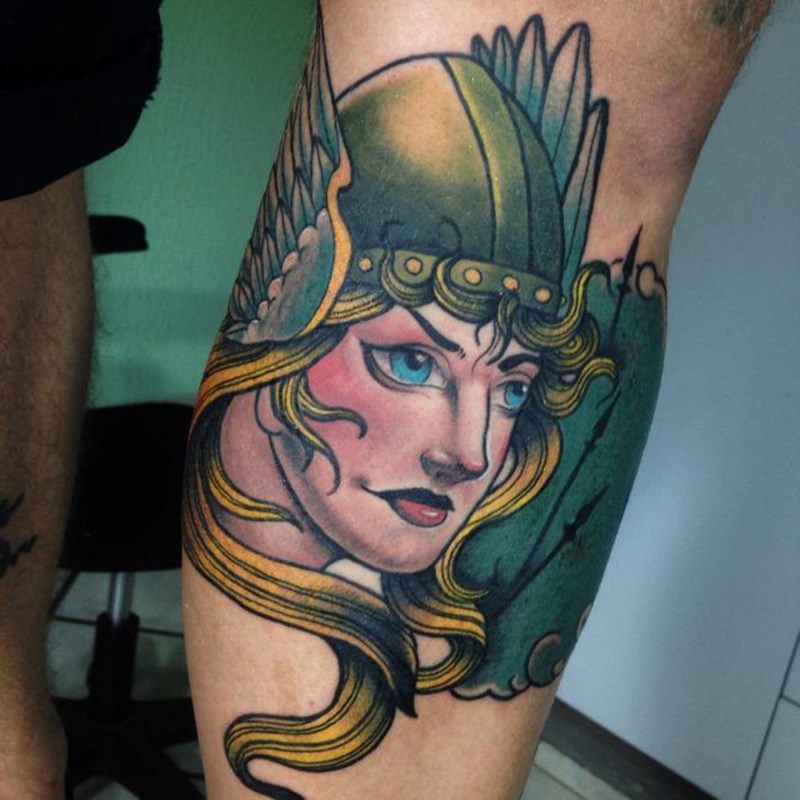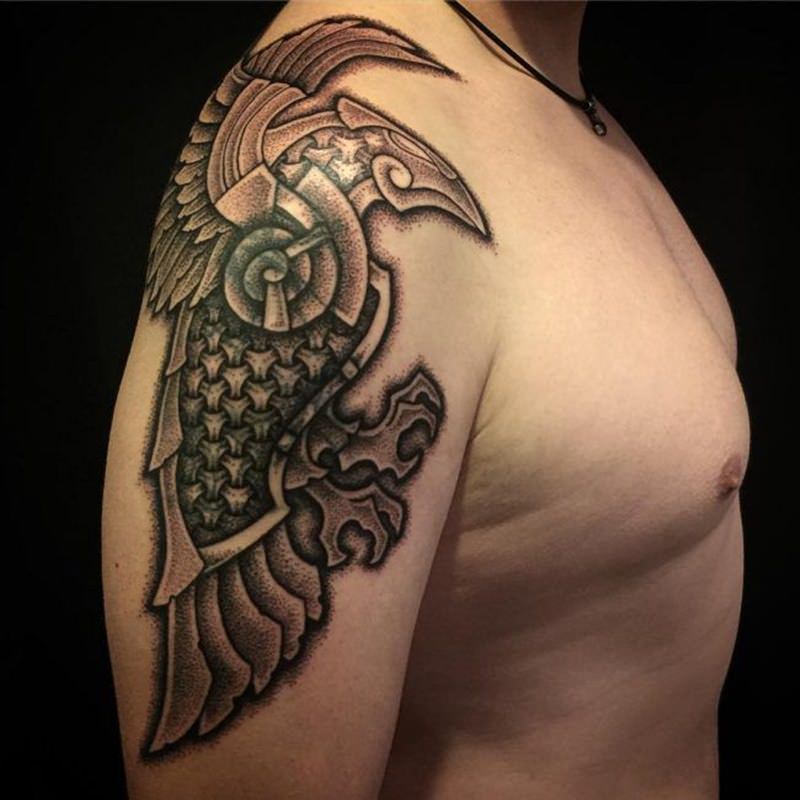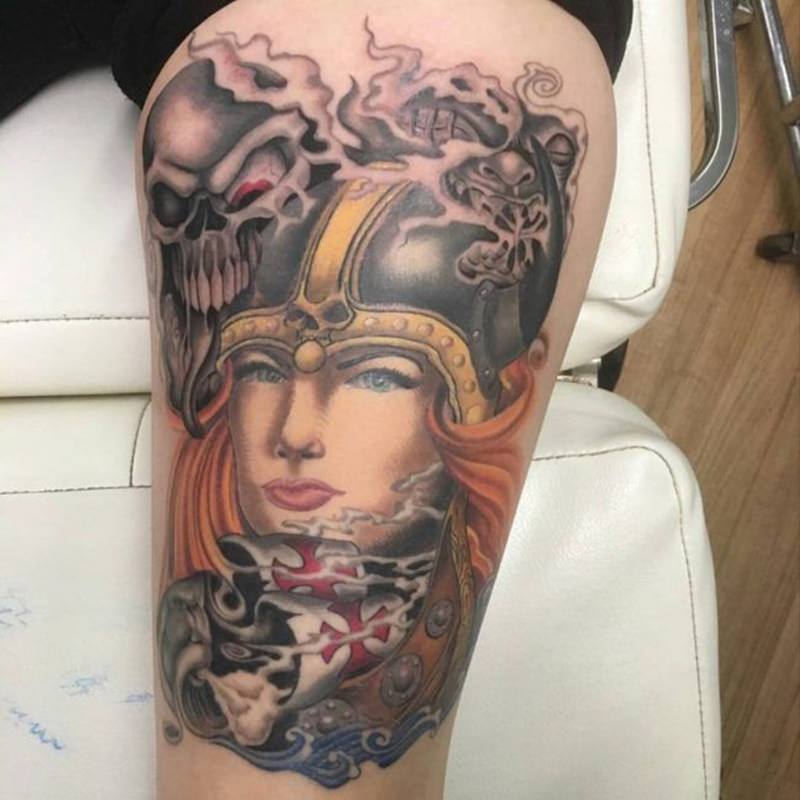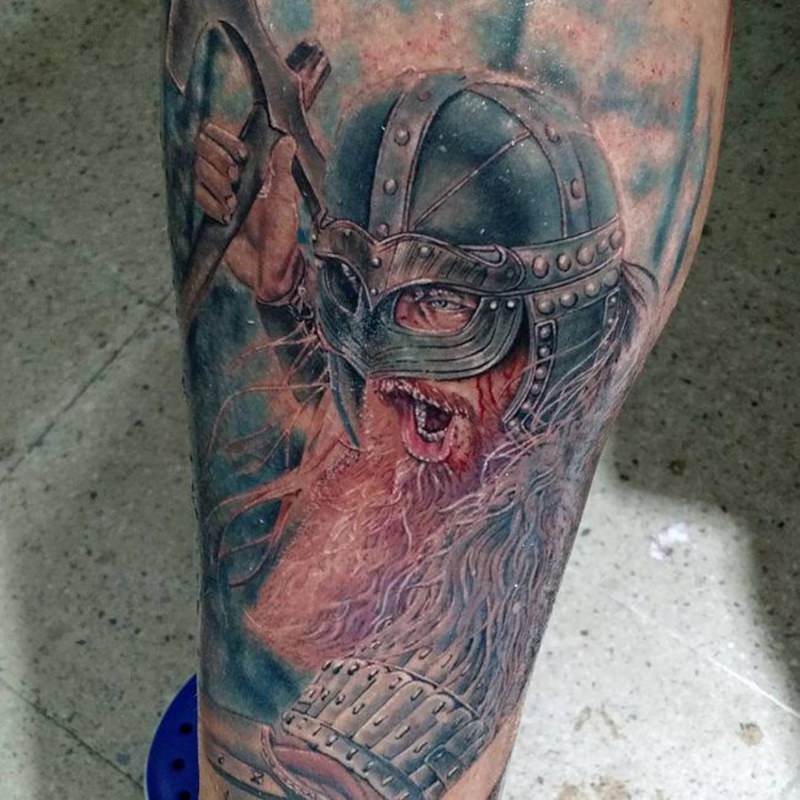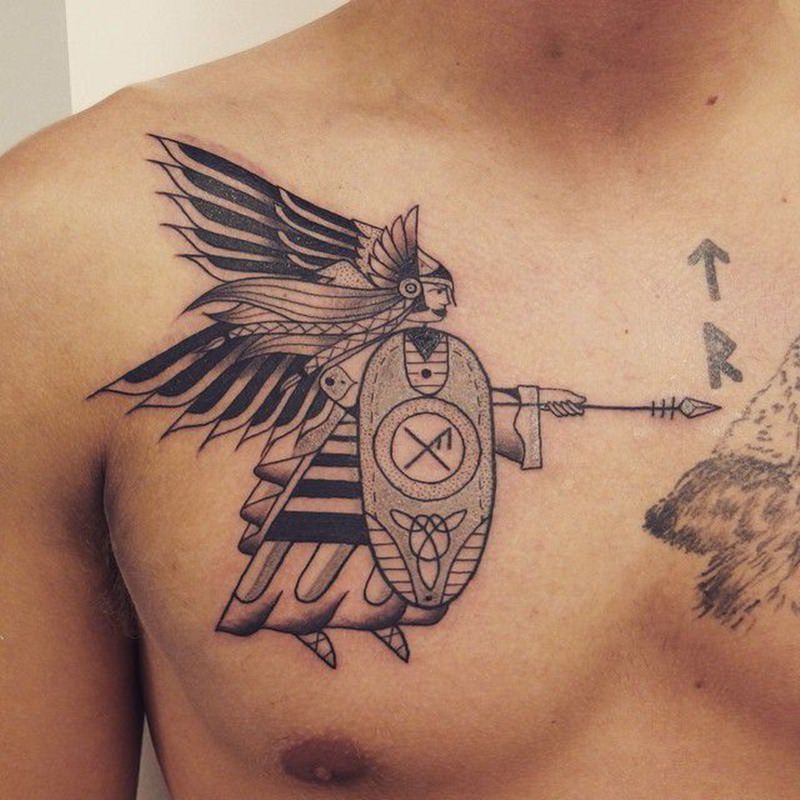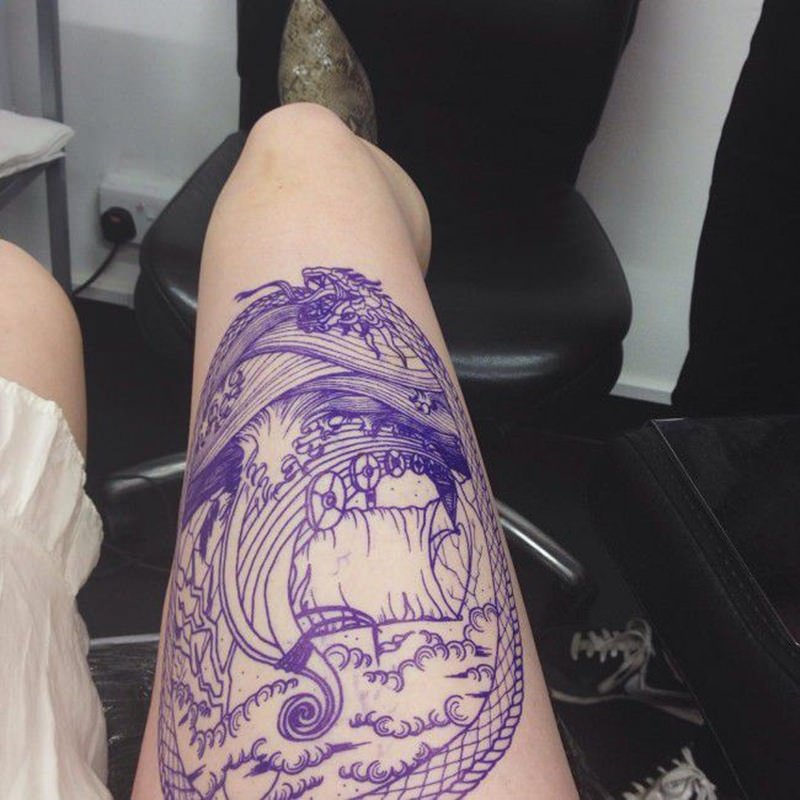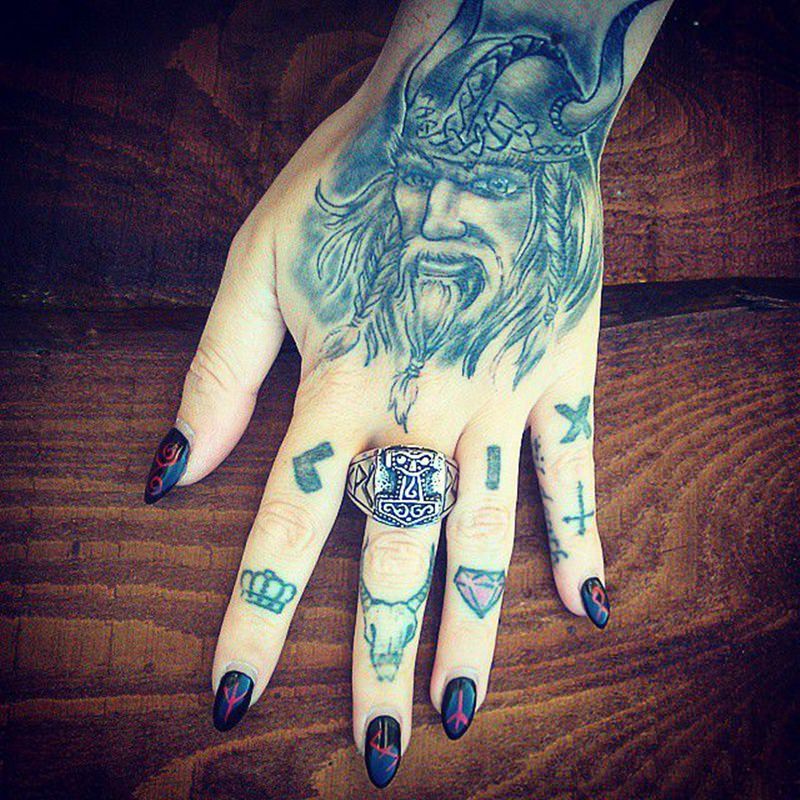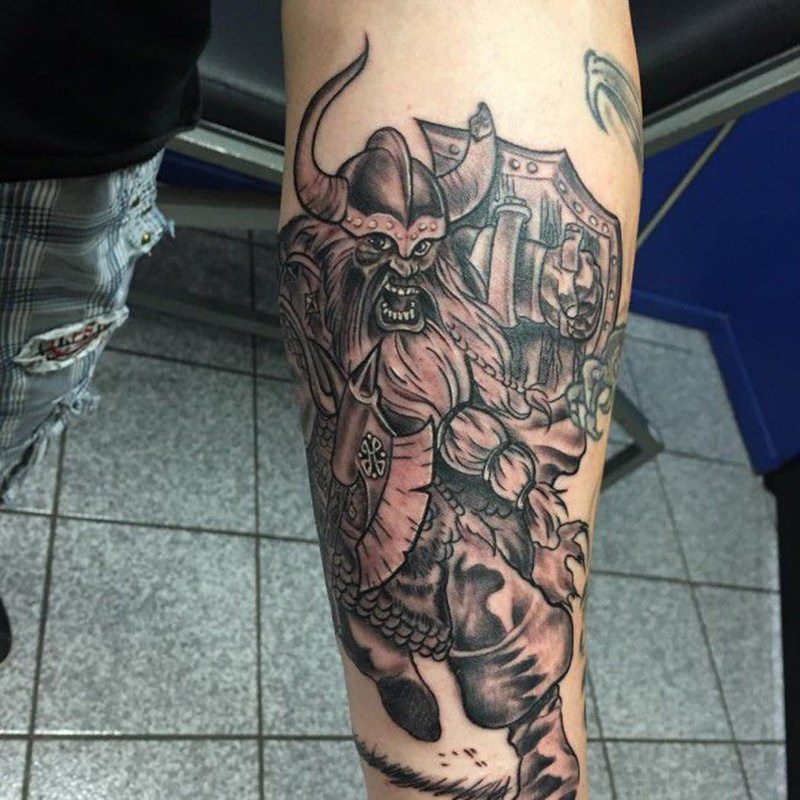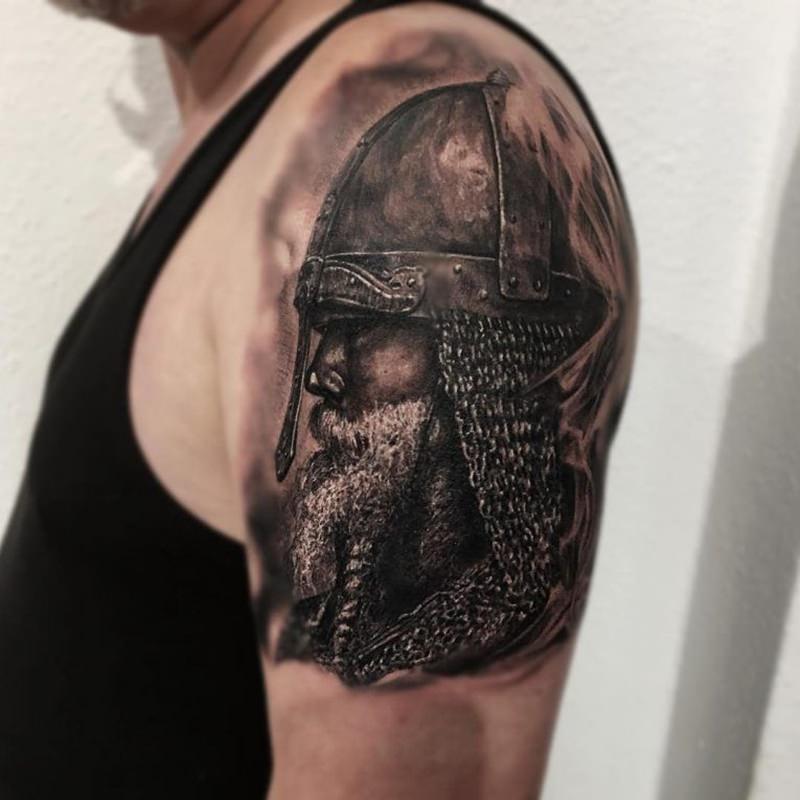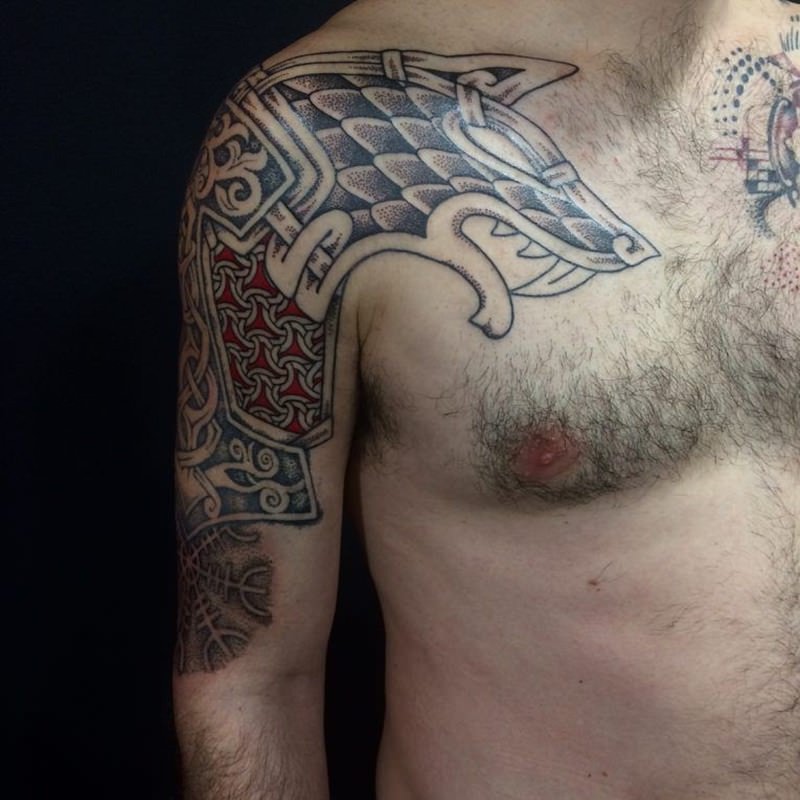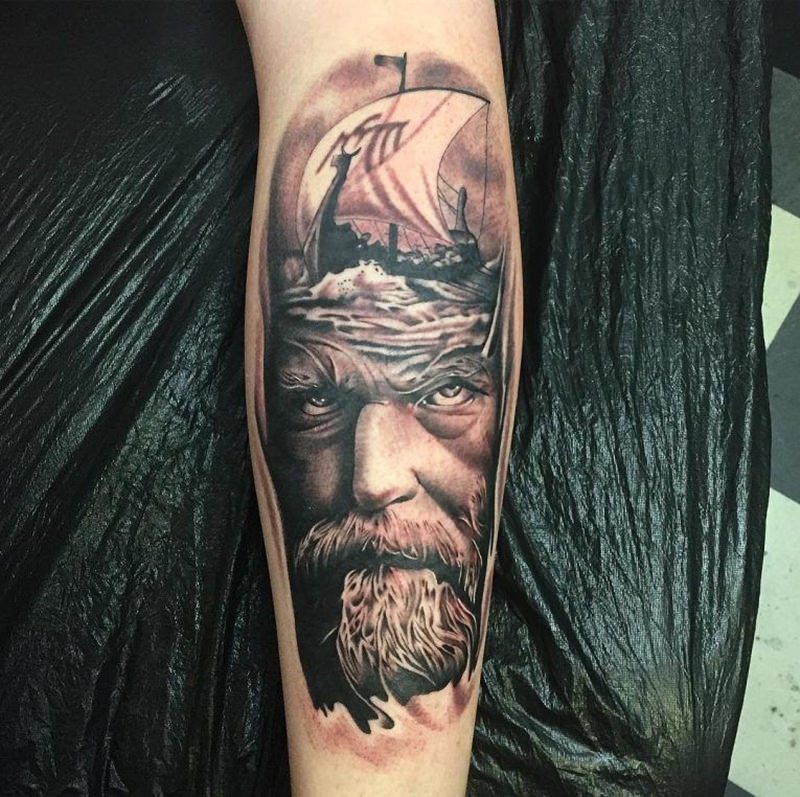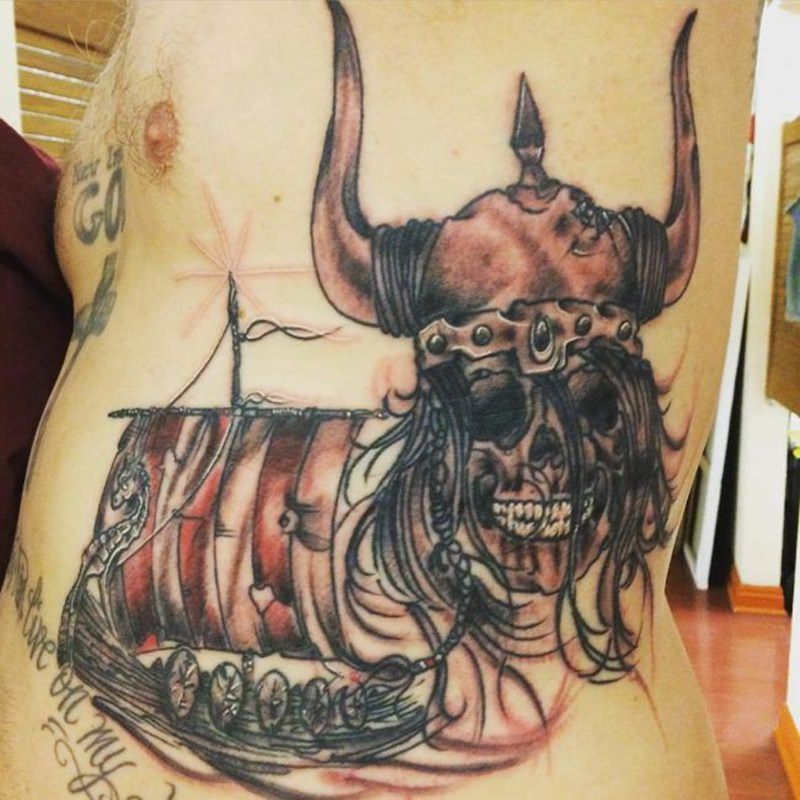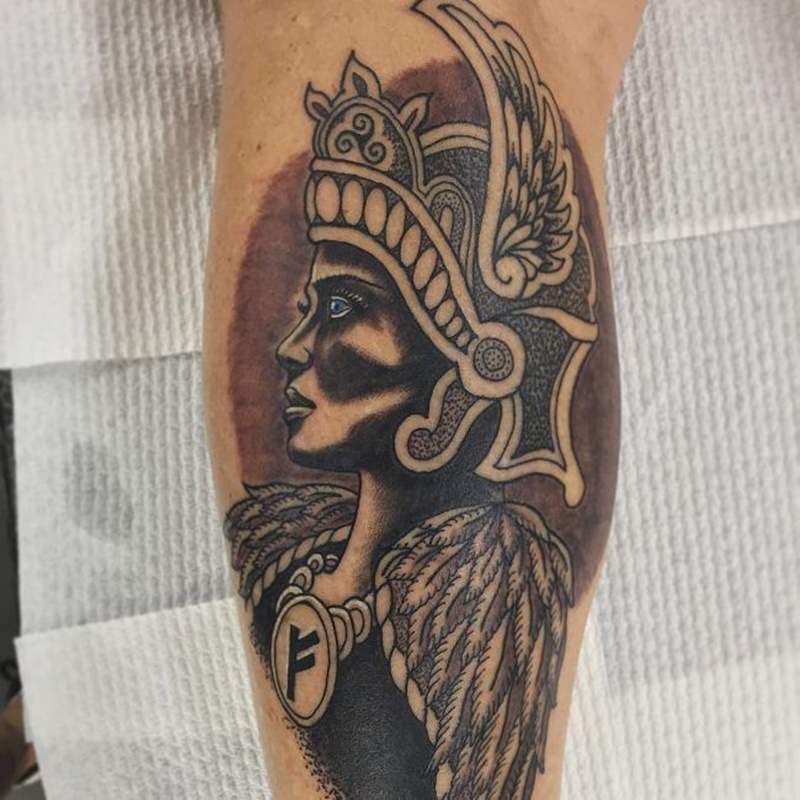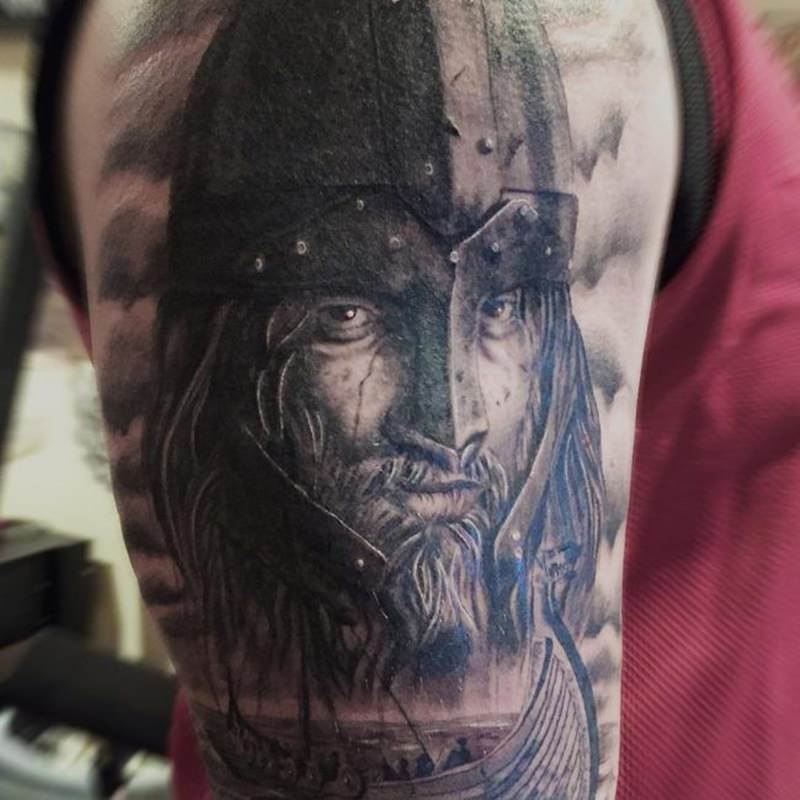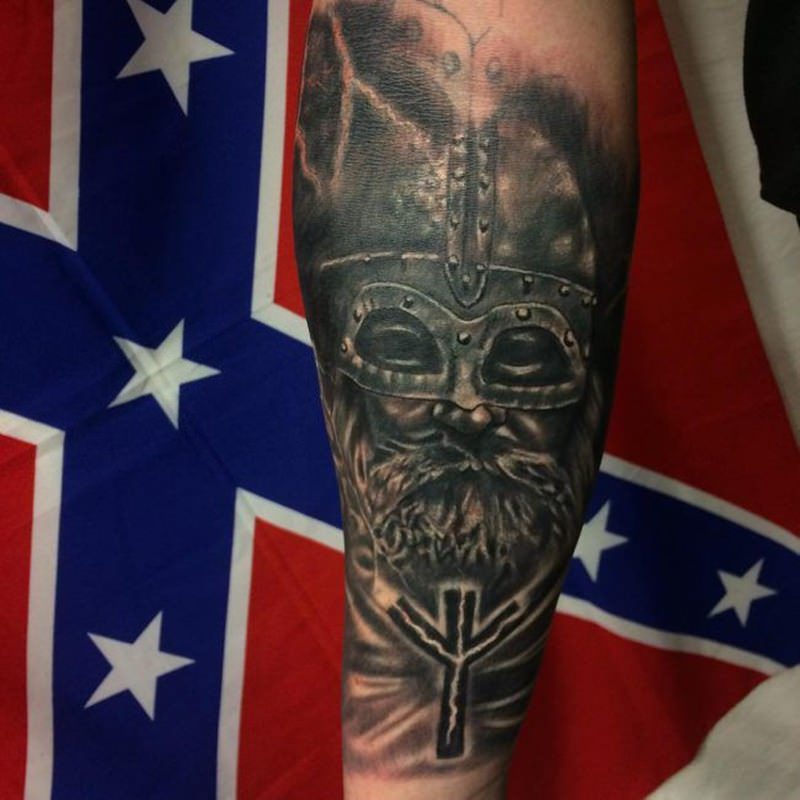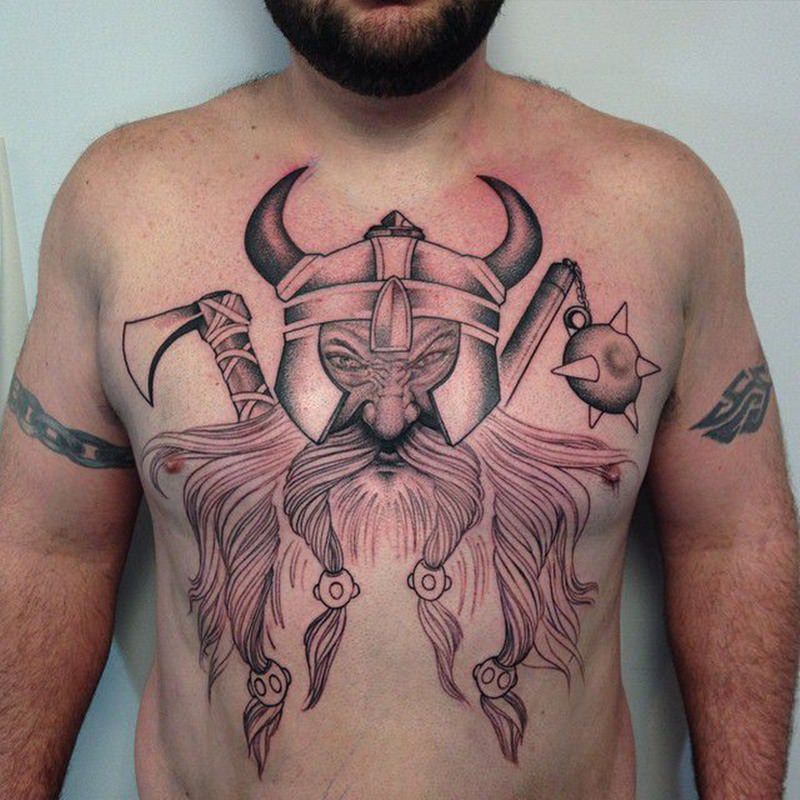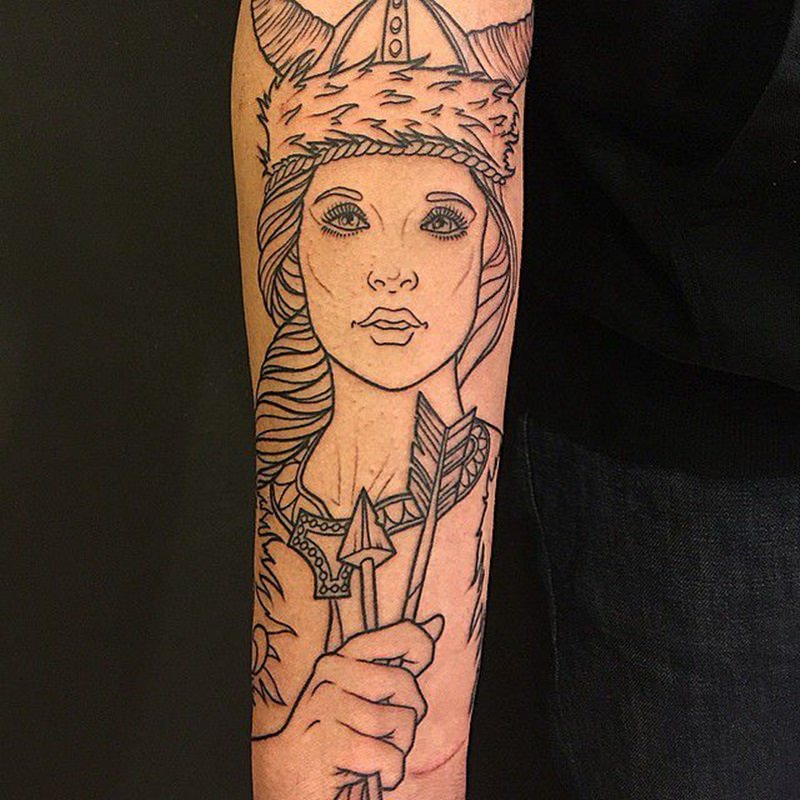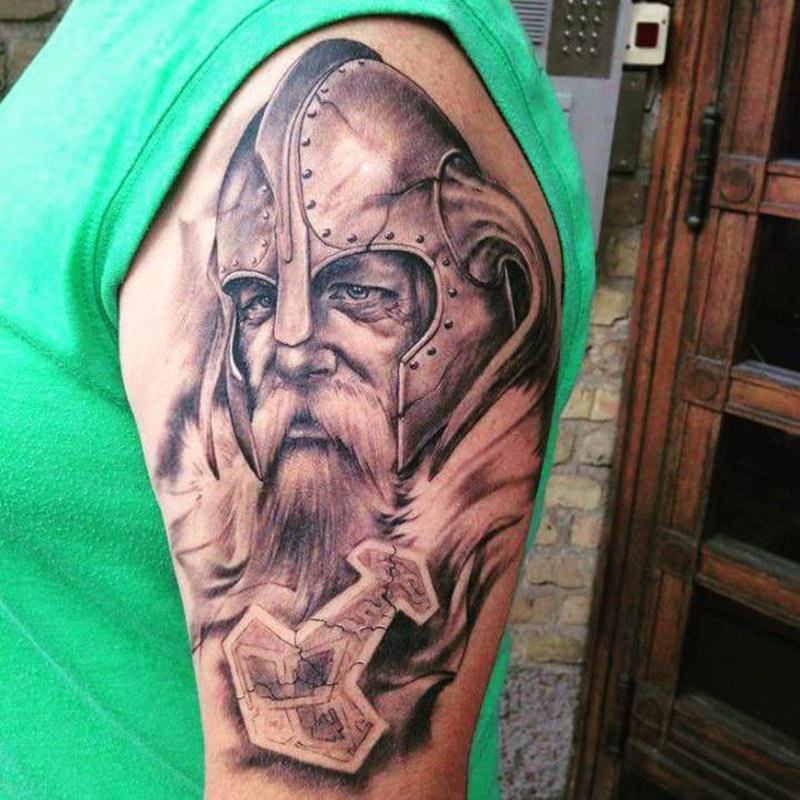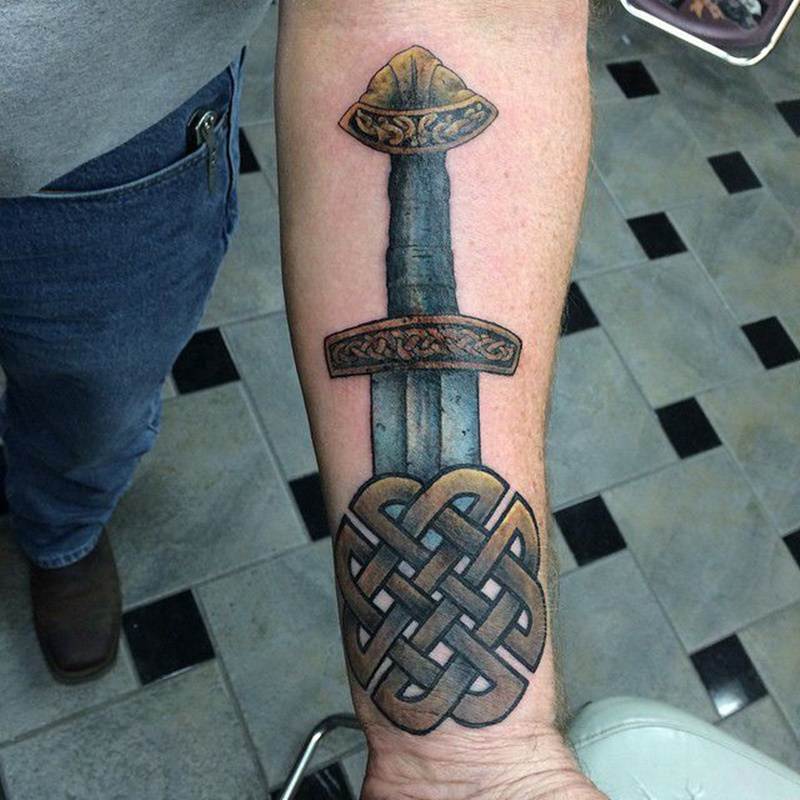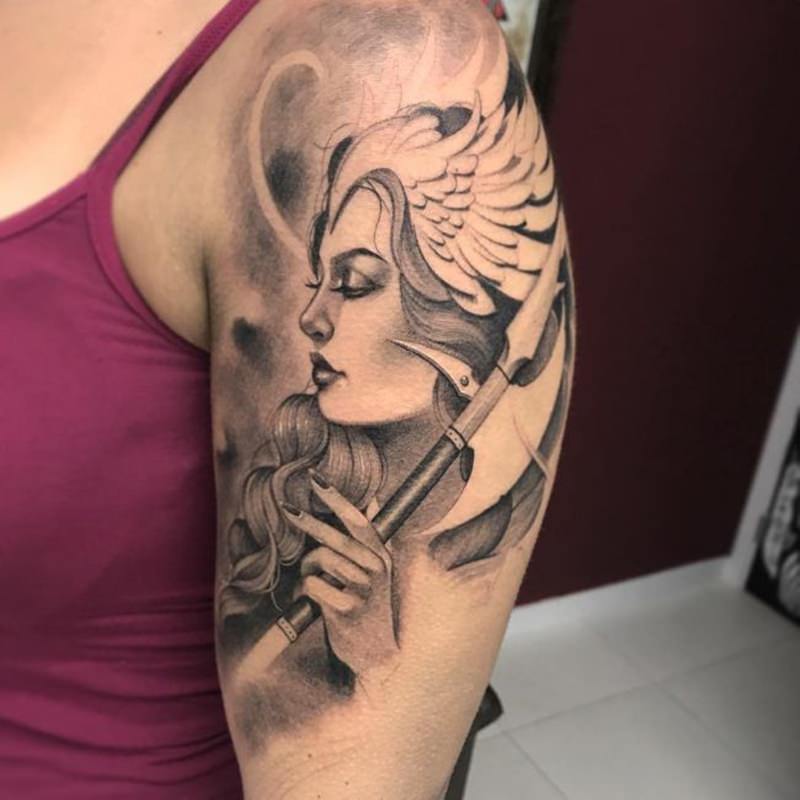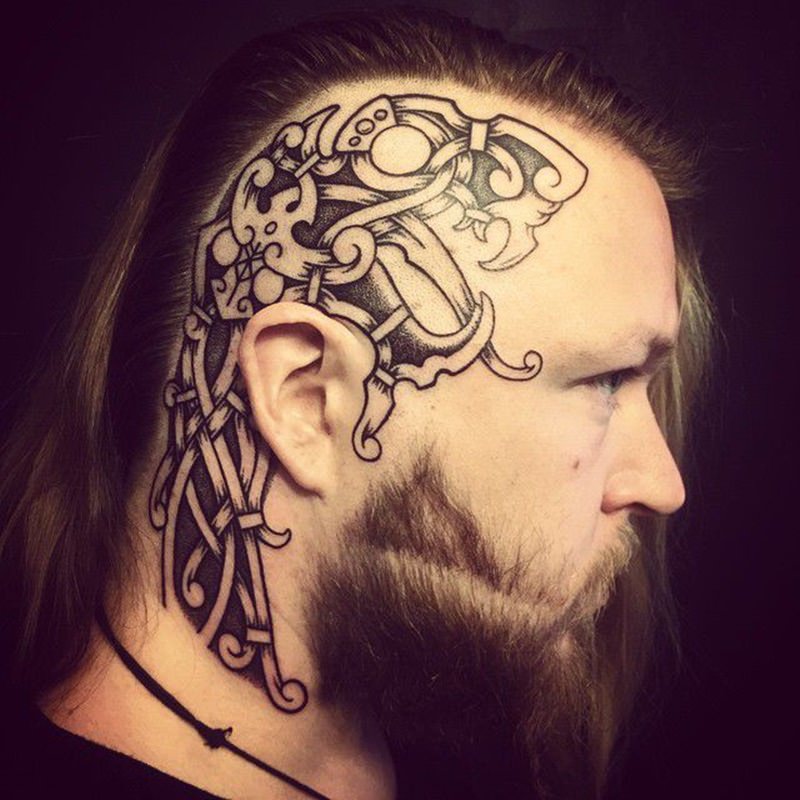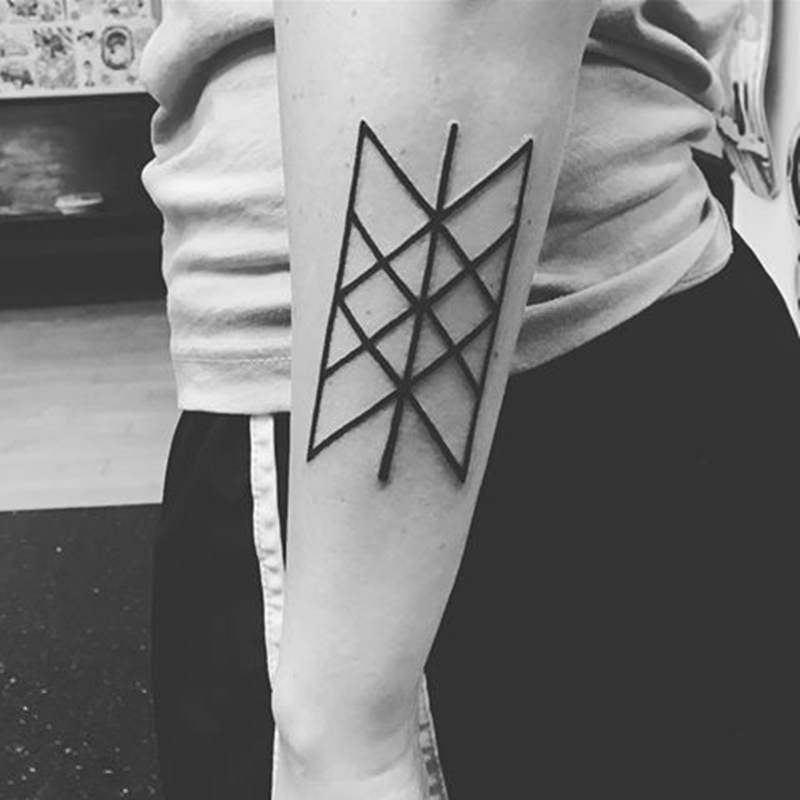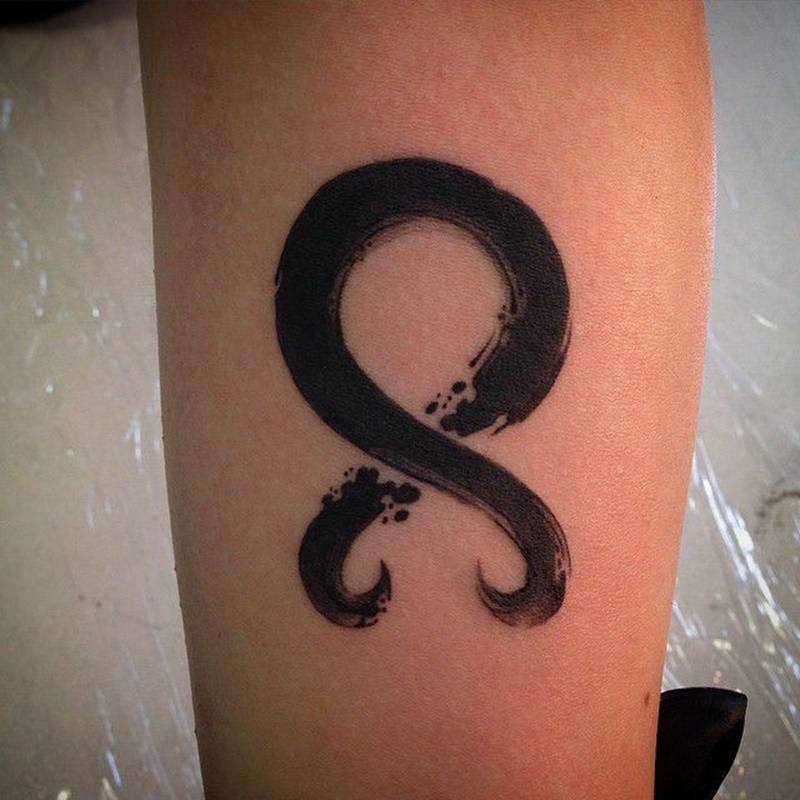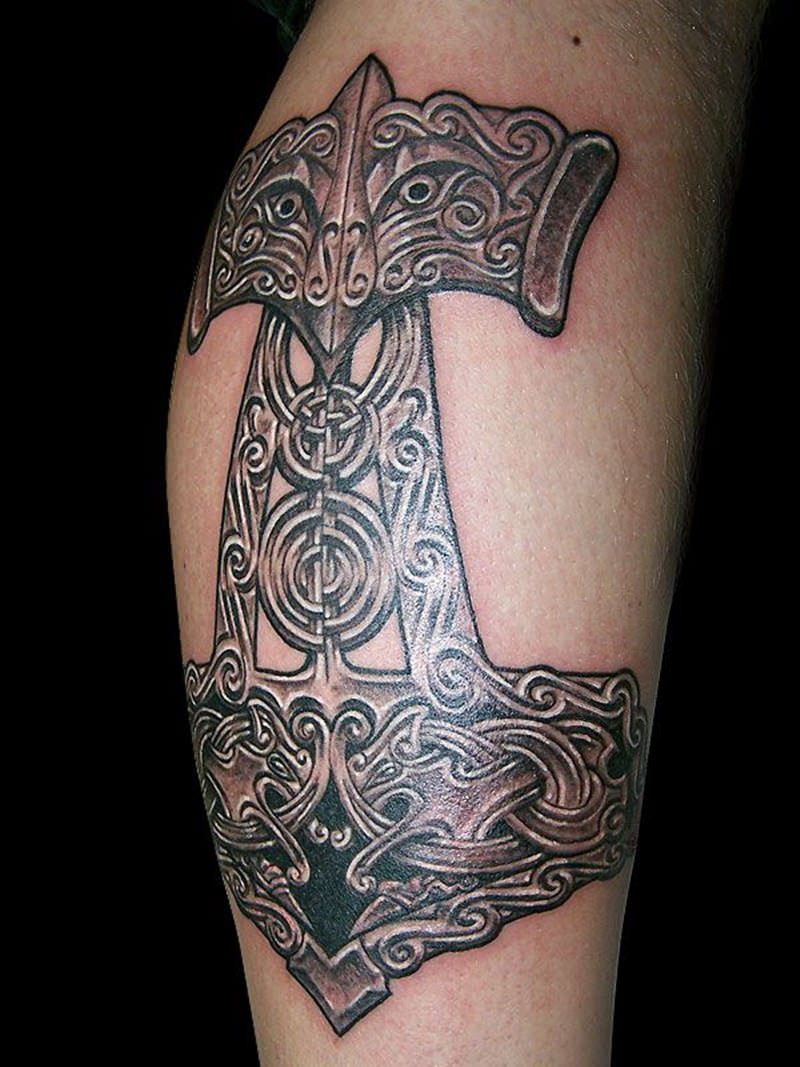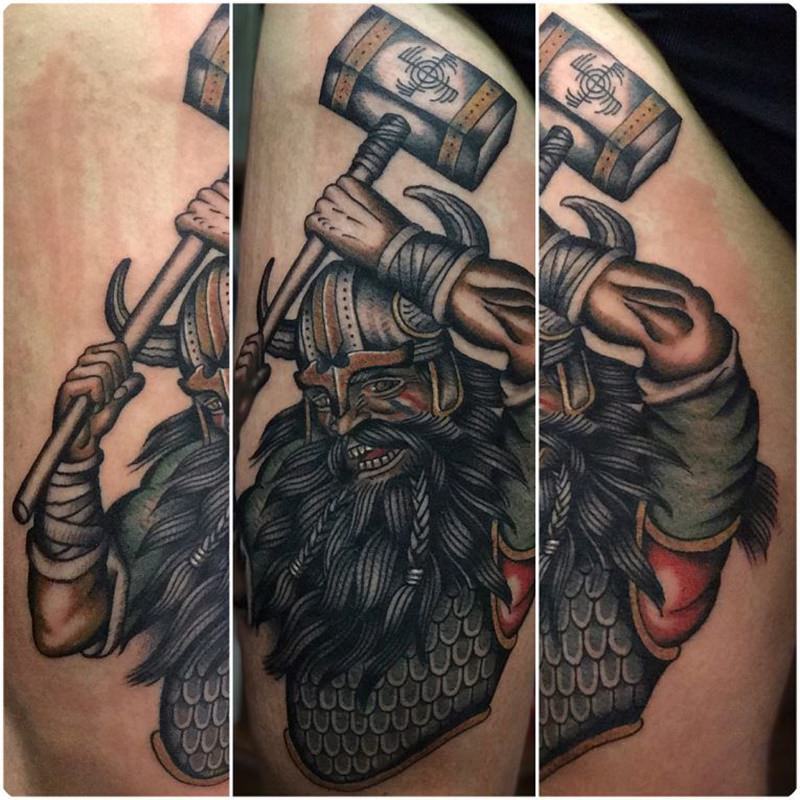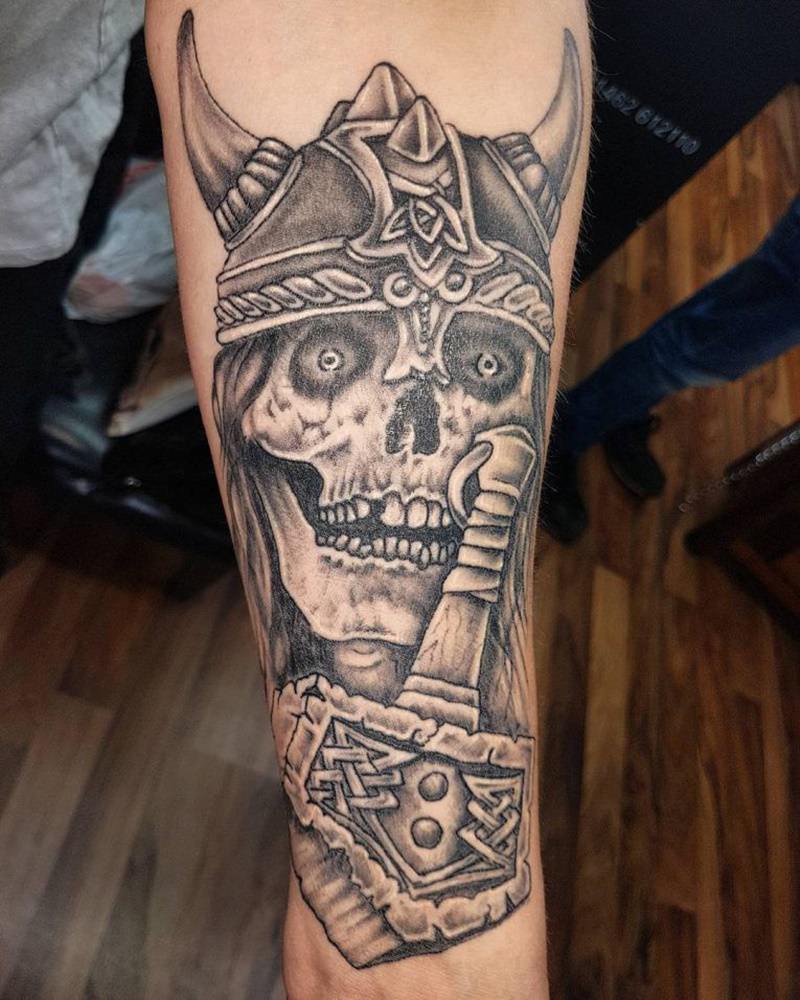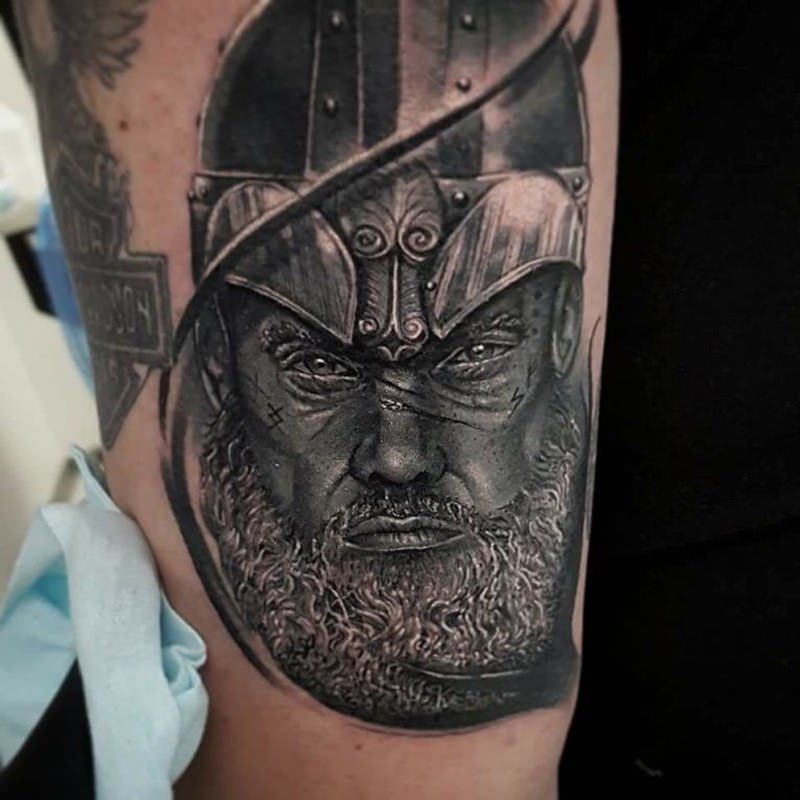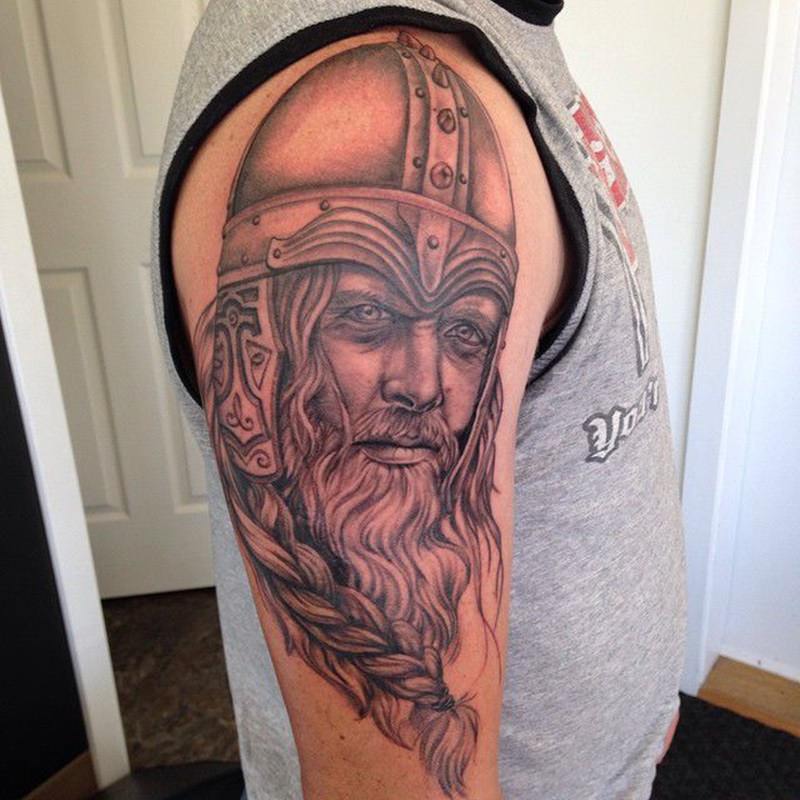Vikings refer to warriors originating from Scandinavian regions, including Sweden, Norway and Denmark, in as early as 8th to 11th centuries. These warriors were well-known for their specialized skills in sailing and navigating across seas. Vikings were the masters of the sea. They explored, traded, plundered and traveled across Europe. They raided Britain and French coasts for hundreds of years.
According to some evidences, tattoos covered the bodies of Vikings. They were typically depicted as huge, muscled barbarians. From their hands up to their arms, torsos and necks, Vikings were clad in mighty tattoos. However, contrary to modern depictions of Vikings, these warriors did not typically wear horned helmets in battles. They also didn’t use large swords.
Ancient Norse symbols and patterns were popular in Viking Nordic tattoos. These symbols include trees, knots and runes. Not only in tattoos, the symbols could be found on boats, ornaments and artifacts. Vikings proudly showed off their tattoos to signify strength, power, determination and commitment to their way of life.
Today, modern Viking tattoos express richness in culture. Individuals with Norse lineage are particularly drawn to Nordic tattoos. People who are fascinated with Norse mythology and history also like to get such tattoos.
Viking tattoos revolve around mythology, folklore and religion. Hints of Nordic gods, deities and heroes can be found in many designs. Nordic tattoos vary from bold, black patterns to elaborate, colorful designs.
If you’re interested in the Viking warriors or Norse mythology, then you’d be delighted to explore the following amazing tattoo ideas. Take a look at these striking designs and their meanings. This article will venture into various aspects and elements of Viking Nordic tattoos to satiate your interest.
Different Types of Viking Tattoos
The Helm of Awe
Known as the Helm of Awe, this meaningful Norse symbol comprises of eight arms that appear to have spiked tridents at the edges. These tridents seem to protect the central area against outer forces.
The Helm of Awe is an intriguing symbol in Norse mythology. This magical symbol inspires much awe upon anyone who sees it. Moreover, it emphasizes strength that seeks to overpower enemies and overcome obstacles. Linguists and runologists explain that the Helm of Awe is imbued with magical properties and it aims to strike fear. Vikings who wore this tattoo felt more powerful and driven to conquer.
The tattoo below shows a round exterior chain that surrounds the Helm of Awe. Intricate symbols support its structure from below and completes the traditional look.
Here are other examples of Viking Nordic tattoos featuring the Helm of Awe along with other mythological elements.
The Valknut
A mysterious Nordic symbol, the Valknut consists of three, interconnected triangles. Some runestones and stones dating back from the Viking Age portray this enigmatic symbol. The Anglo-Saxons also used this symbol on cremation urns. The name itself means “knot of fallen warriors.” While the particular meaning of the symbol is still largely unknown, it is said to have a connection to death.
Odin, a revered God in Norse mythology, has been associated with the Valknut. The interlocking triangles are said to depict power related to life and death.
The design below portrays the Valknut right in the middle of the forehead. The face appears to be that of a Nordic mythological god. The tree of life lies on top of the head, completing this cryptic, intriguing design. 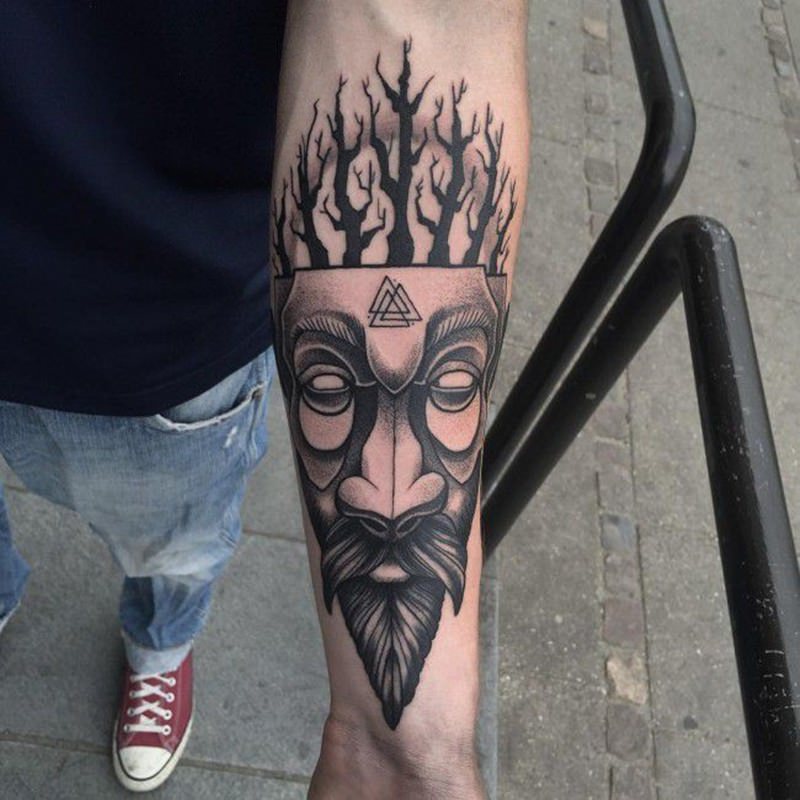
This tattoo illustrates the Valknut on the mainsail of a boat. Different round symbols adorn the side of the boat. For added appeal, the artist depicts this Nordic design using black, purple, brown and blue hues. Pops of red and yellow add a touch of bright color to this tattoo.
In this beautifully colored design, the Valknut is simply one of the many Nordic elements incorporated into the tattoo. The boat looks fierce and undaunted amid thunderous seas.
The tattoo below illustrates the Valknut from a minimalist perspective. Simple, black lines characterize this straightforward tattoo. This is an ideal design if you’re looking for simplicity without sacrificing meaning.
And if you want something bolder and richer in palette, the design below will perk your interest. Shades of orange, blue and green each beautify the thick, intersecting triangles. Fire lies inside one of the triangles, likely highlighting brave, fiery character. Blue waters adorn the second triangle. The third triangle consists of a lush, green forest.
Yggdrasil – The Tree of Life
Another common element among Viking Nordic tattoos is the tree of life. Yggdrasil is the dwelling place of the gods and goddesses, and it lies in the center of Asgard. This eternal ash tree boasts thick branches that extend toward the nine worlds, according to Norse mythology. The branches also reach up to the heavens. Three huge roots support Yggdrasil. This mythical tree is where the gods and goddesses meet daily to discuss governing topics.
Horn Triskelion
Featuring three drinking horns, the Horn Triskelion has a threefold rotational symmetry. This Norse symbol pays homage to Odin, who drank three horns of mead to flee in eagle form.
The Norse Triskelion is a popular symbol in Viking Nordic tattoos. Today, it’s also a recurring symbol in video games, board games and various entertainment media in modern society.
Symbols bearing symmetrical threes represent magic and power. With Odin’s cunning way of obtaining sacred mead to transform himself, the Horn Triskelion becomes a way of portraying your clever, knowledgeable nature.
Huginn and Munnin
In the Norse mythology, Odin has two, loyal ravens that perch atop his shoulders. These black ravens would fly across the nine worlds to gather information and deliver valuable news back to Odin.
Portrayal of the raven messengers in Viking Nordic tattoos means knowledge and wisdom. The ravens were well-loved by Odin, who sometimes feared that they wouldn’t return to him from daily flights. Because they stayed by Odin’s side, Huginn and Munnin are also said to illustrate loyalty.
The tattoo above shows Huginn and Munnin perching on branches. In the background, you can see the Helm of Awe symbol to combine traits of loyalty and strength.
This tattoo boasts a traditional look featuring bold, black ink and incredible shading. Huginn and Munnin look to one side, and beside them is a brave Viking warrior with a ferocious look on his face.
Ouroboros
This ancient symbol illustrates a serpent devouring its own tail. The act of eating its own tail creates a circle, which signifies infinity or the continues cycle of life and death. Upon devouring itself, the snake then becomes reborn. Ouroborous is, in fact, a Greek word, and its origins can be traced to ancient Egyptian iconography.
Ouroborous has become interwoven with Nordic symbols in Viking tattoos. It emphasizes the endless cycle of life renewal. If you want a thought-provoking element in your tattoo, this symbol looks great as a stand-alone tattoo or part of a more elaborate design.
Viking Nordic Tattoos
Many Viking tattoos today take inspiration from Norse mythology. They feature various revered Nordic gods and deities. These include:
- Odin
- Freya
- Loki
- Thor
- Baldr
- Frigg
- Heimdall
- Iðunn
- Njörð
- Skaði
Many Nordic tattoos show off meticulous designs highlighting the faces of these well-known mythological gods and goddesses. Other tattoos boast brooding, bearded warriors with horned helmets, massive swords or heavy hammers. To spice up your Viking tattoo, you can merge different elements from the Norse mythology. Pair an image of Loki with the raven messengers Huginn and Munnin. Combine the Helm of Awe with the Tree of Life or Valknut.
The tattoos below depict Nordic characters in a way that inspires awe and makes the tattoo wearer look formidable. Some designs prominently use dark shading and thick, black outlines. Other designs use pops of color for added visual appeal. Horned helmets, axes and swords are common elements among these Viking tattoos.
Whichever design you choose, make sure they represent who you really are, especially if you’re proud of your Nordic heritage. Norse mythology enthusiasts can get these tattoos as well to show off their passion. If you want to symbolize power, strength, bravery, fierceness and loyalty, these Viking Nordic tattoos are a great choice for you.
Viking Tattoos FAQs
Where should I have my Viking Nordic tattoo?
Anywhere you feel comfortable to show off your tattoo! Whether you’re getting the Ouroborous, Helm of Awe, Tree of Life or Thor’s hammer, make sure your chosen area accommodates the design properly. Arms, wrists, the back and the chest are common areas for these tattoos.
Should I get a traditional or modern design?
If you want classic, timeless appeal, traditional tattoos using black ink and dark shading are a good option. However, if you want to put a twist to your new tattoo, explore modern styles such as watercolor and 3-D tattoos.
Are Viking tattoos only for those with Norse heritage?
While many people with Norse lineage opt to get these tattoos, anyone who’s passionate about the Norse history can, of course, choose to have them.
Can both men and women have Viking Nordic tattoos?
Yes, why not? If you want something fierce, enigmatic and symbolic, Viking tattoos are a good form of self-expression.
Conclusion
Now that you know about different Nordic symbols, you’ll be able to decide which elements best represent your personality. Consider the designs above when choosing your next tattoo. Don’t forget to select a talented, experienced and skilled artist who specializes in Viking Nordic tattoos to get the best results.
